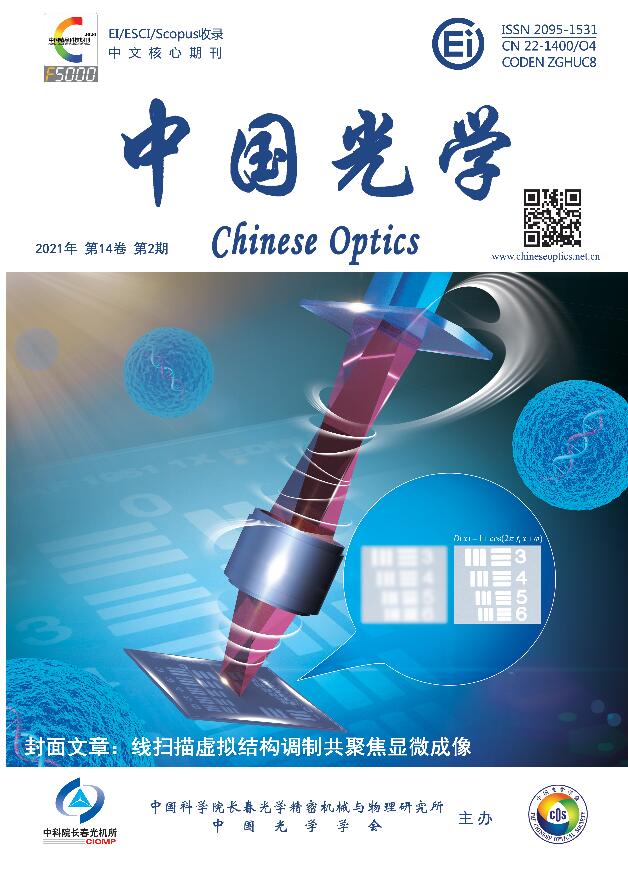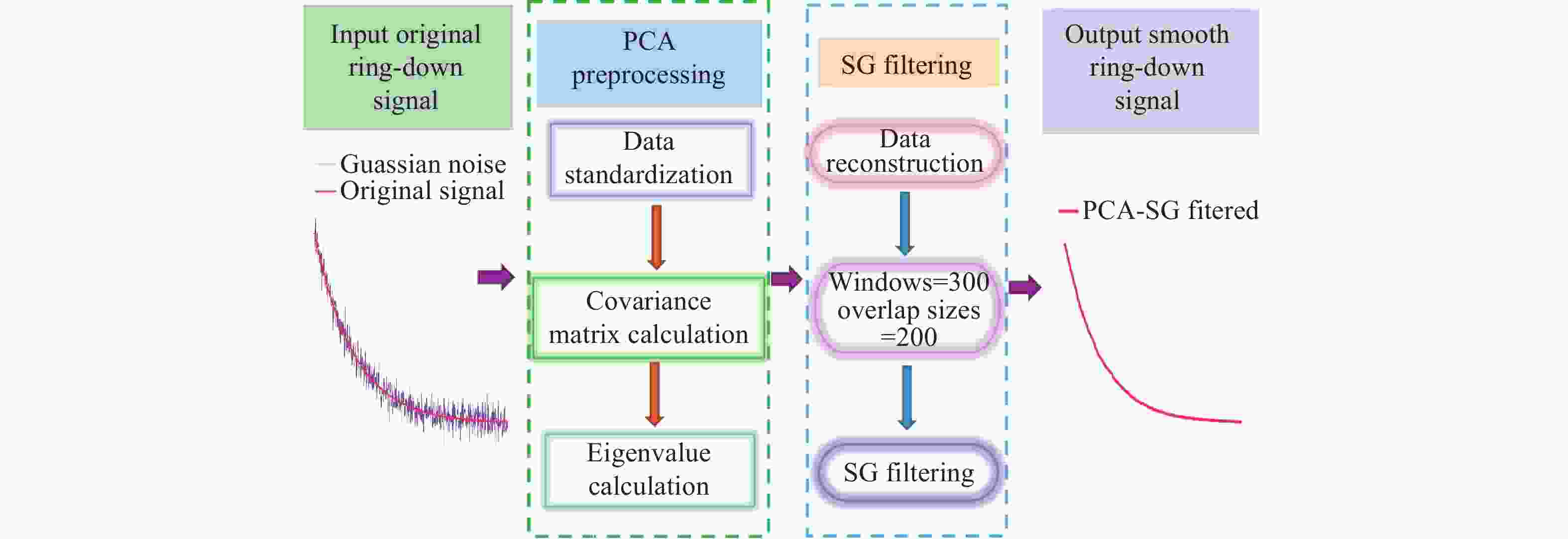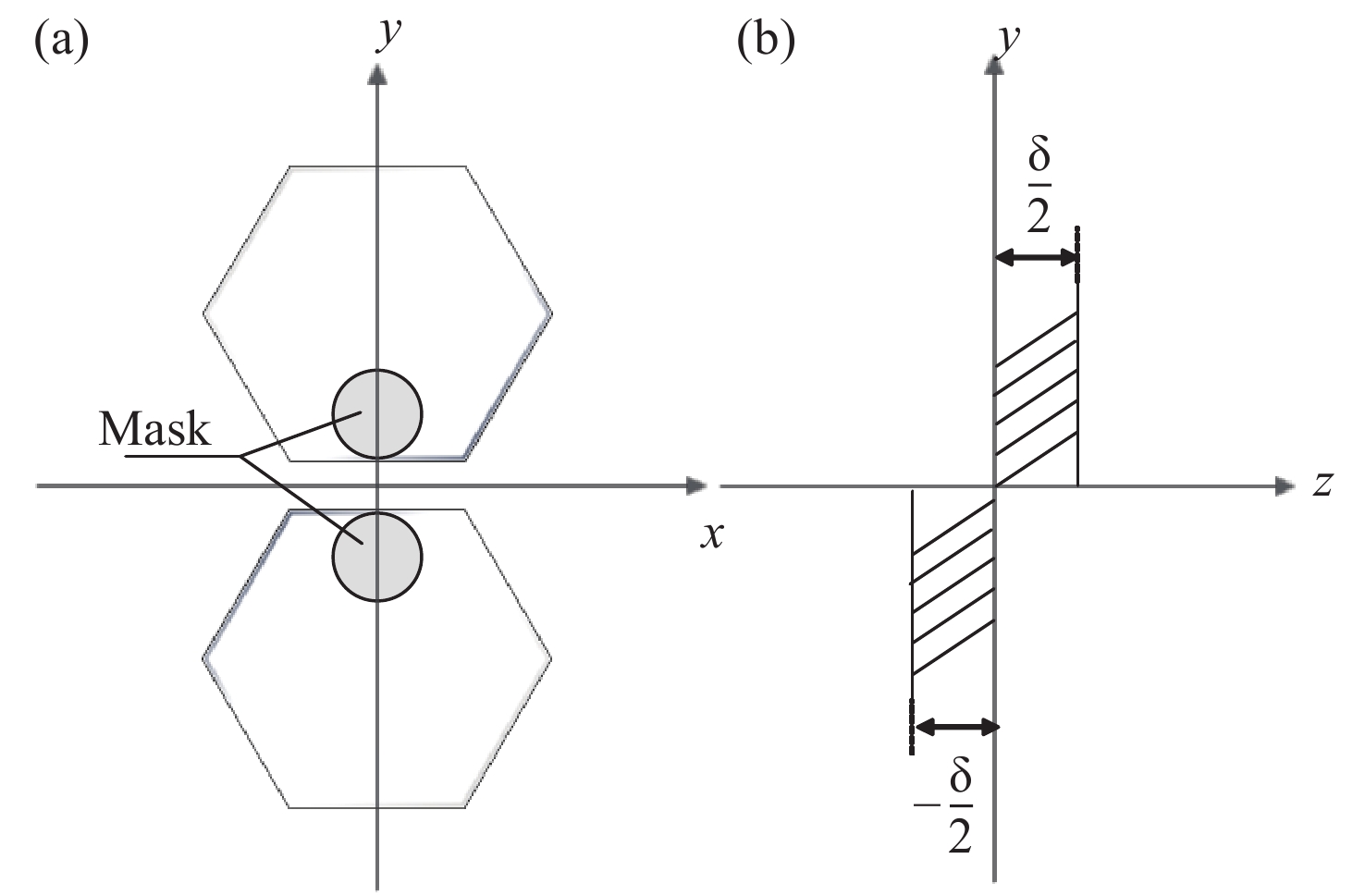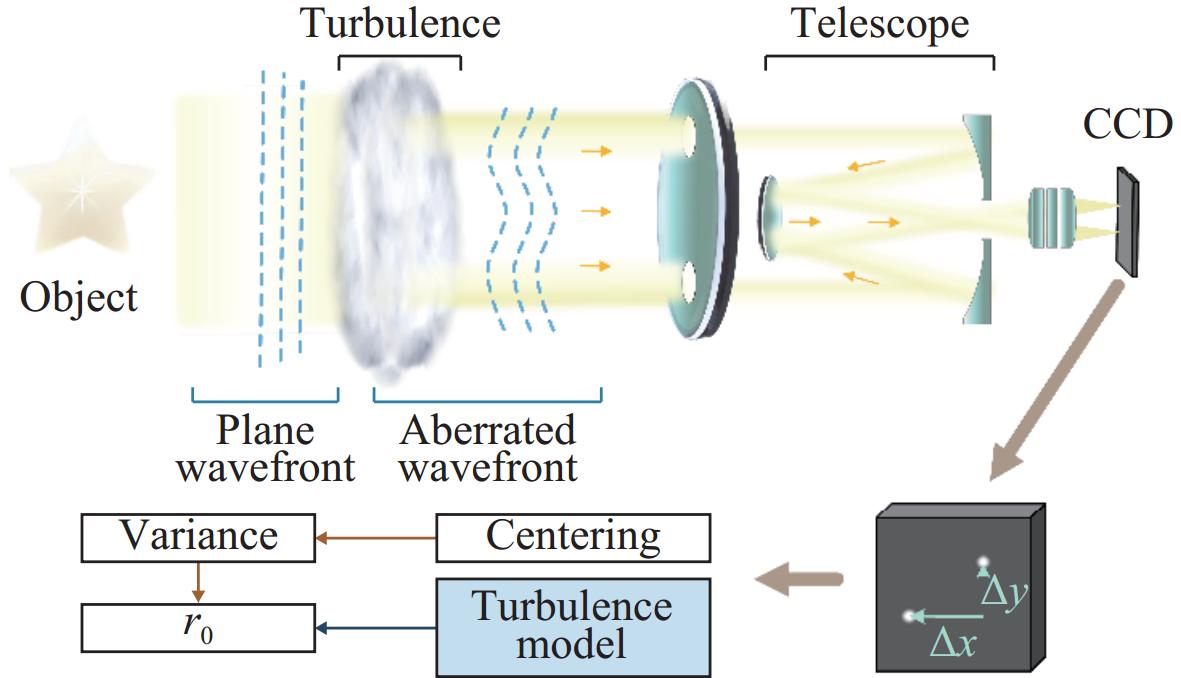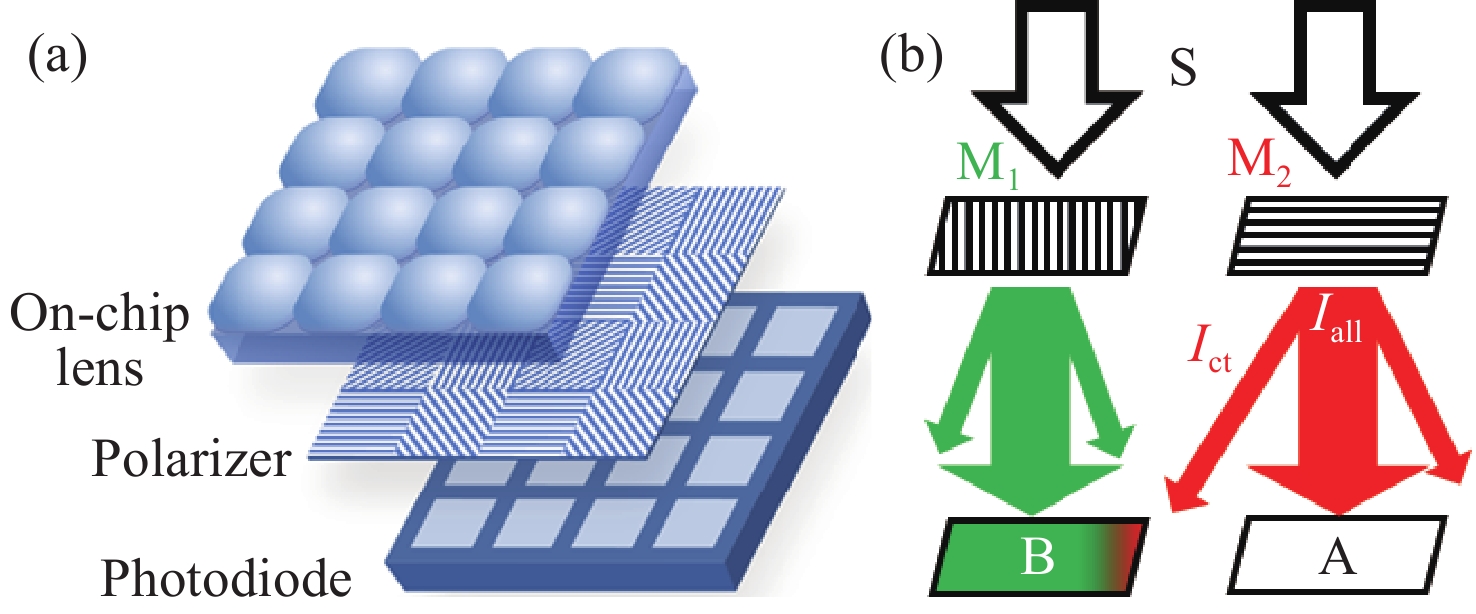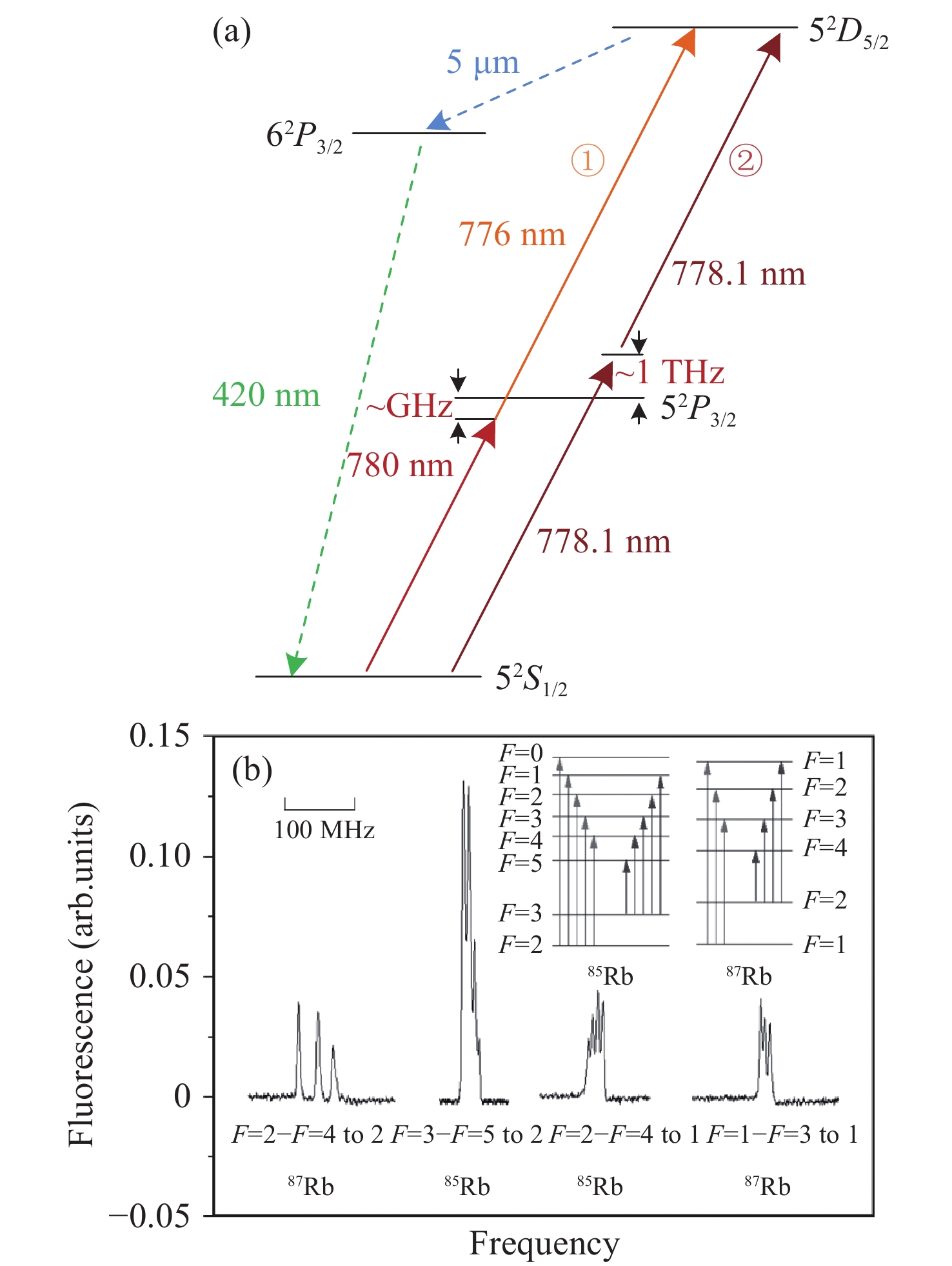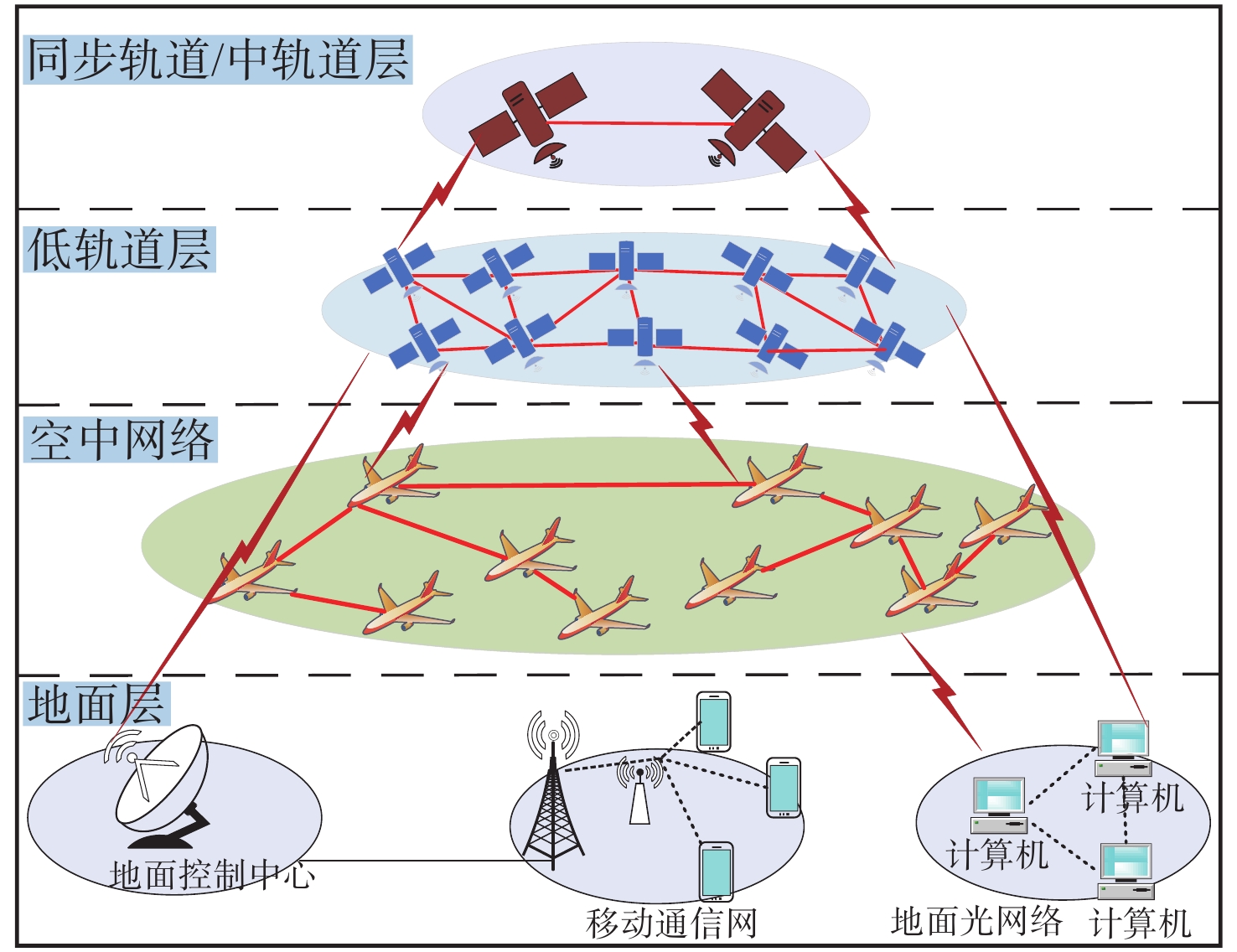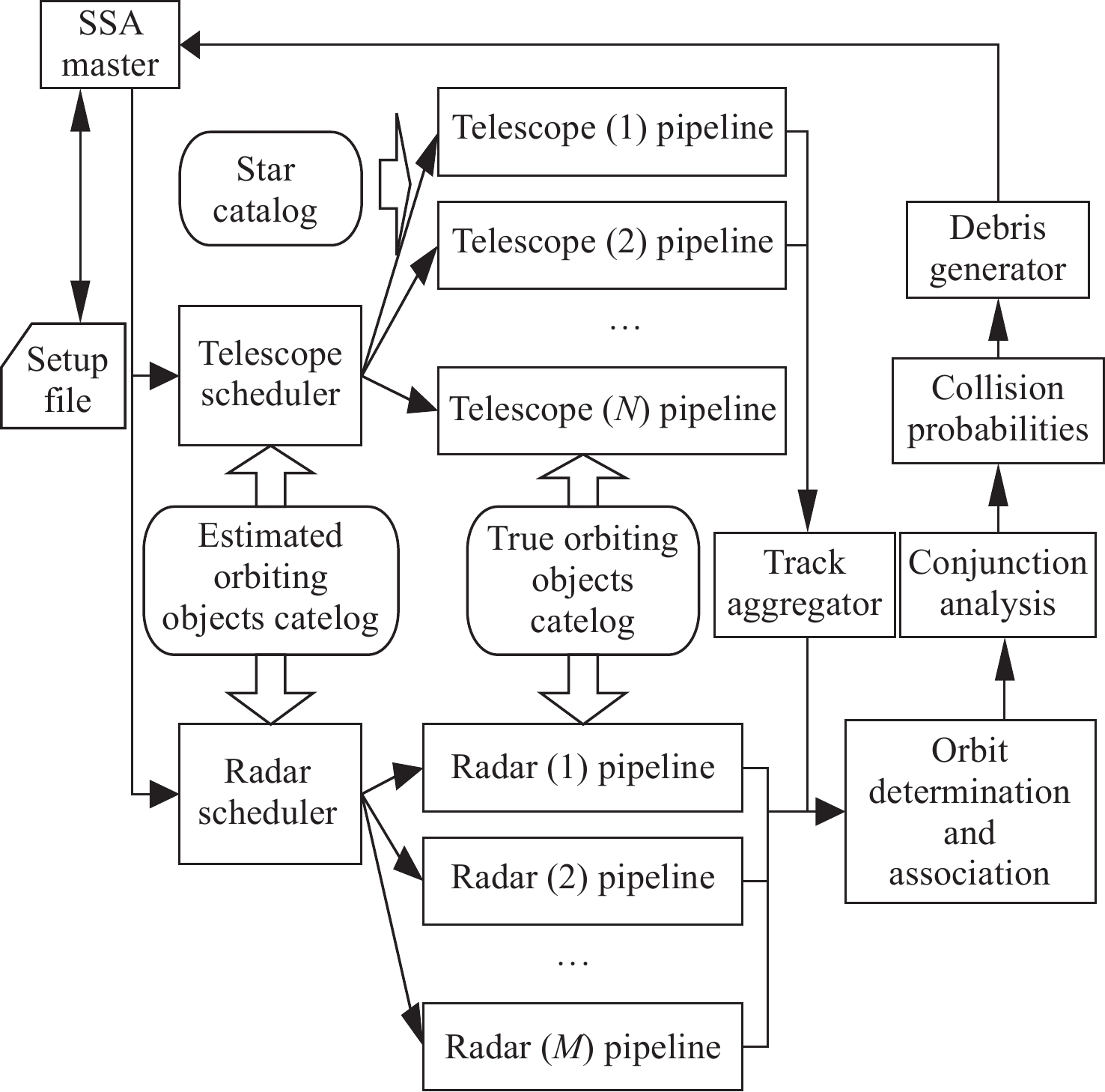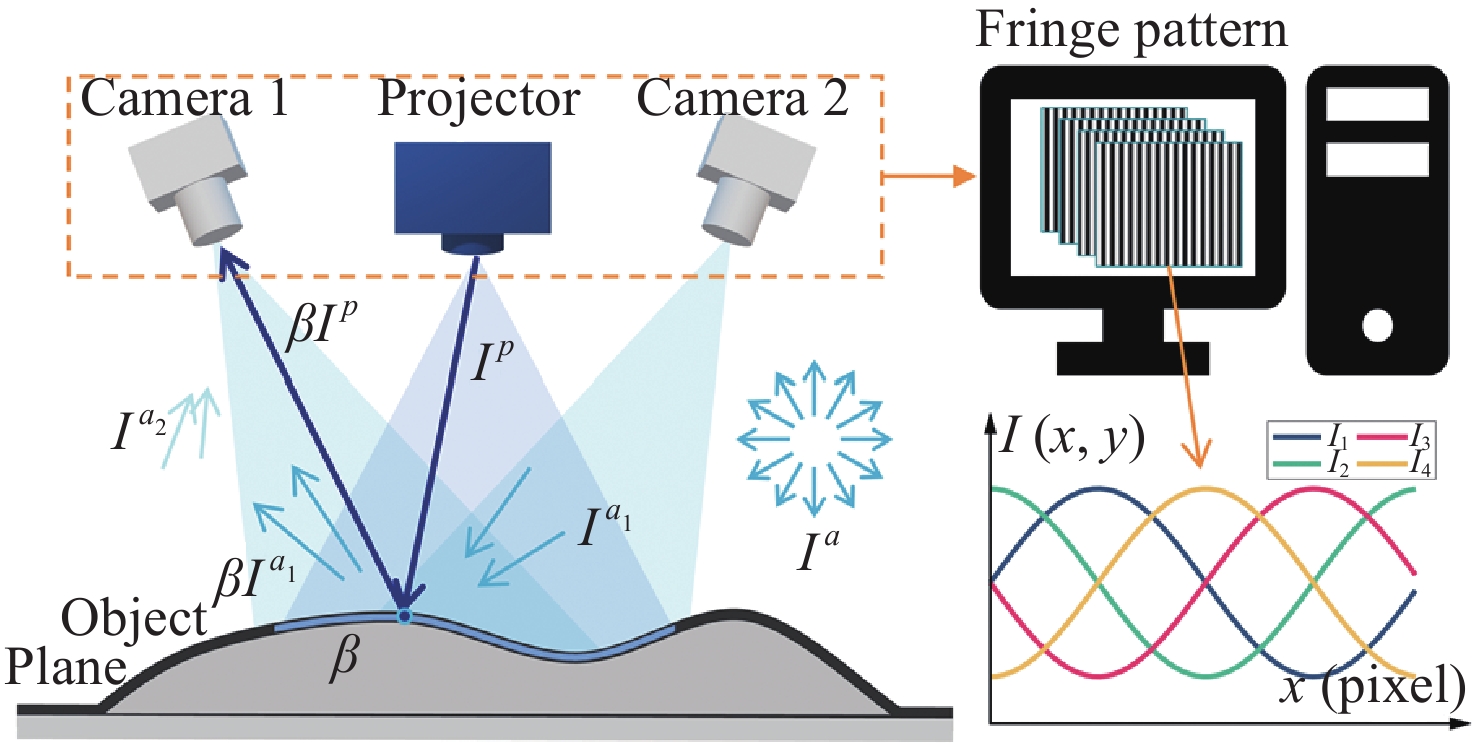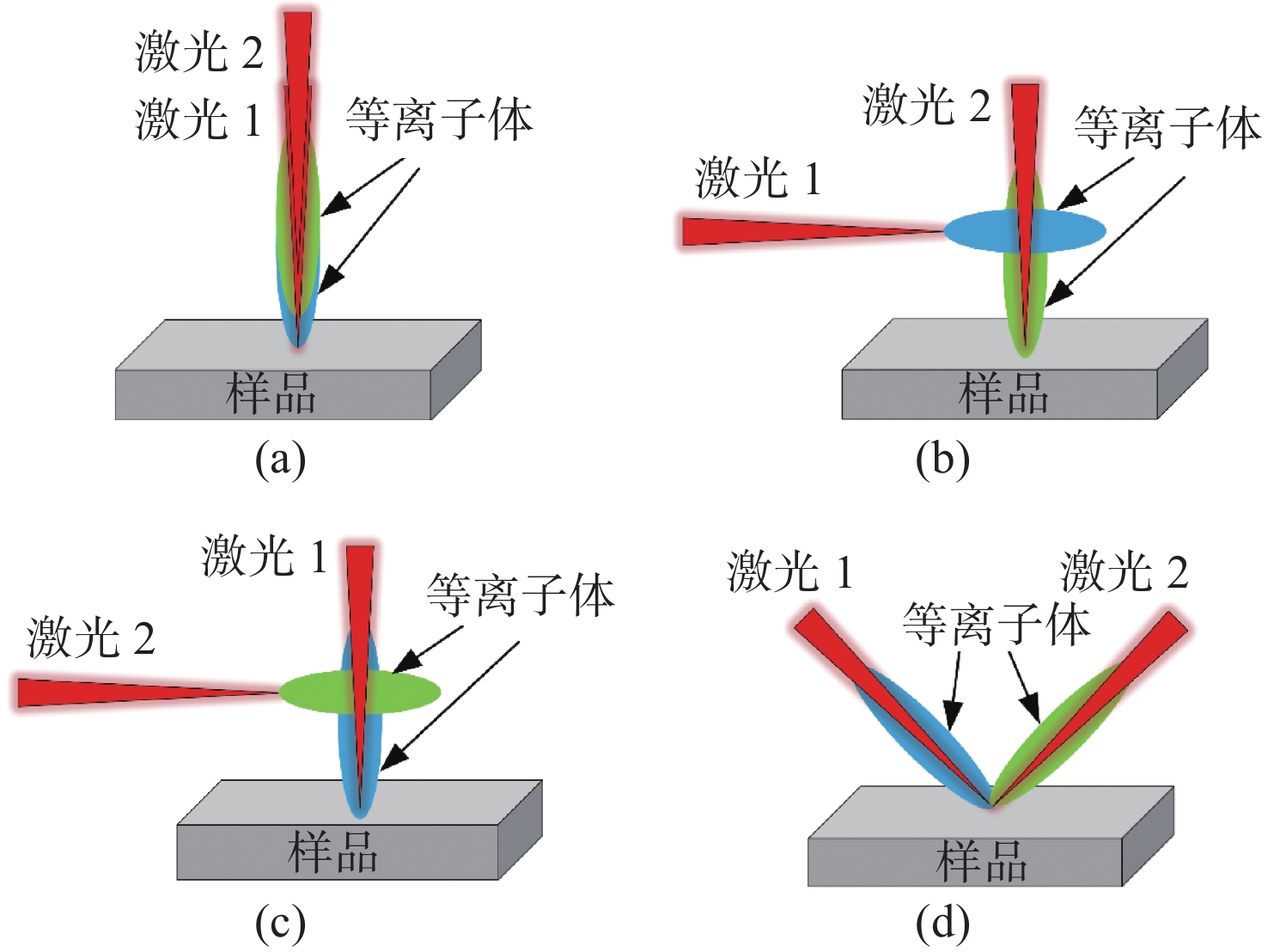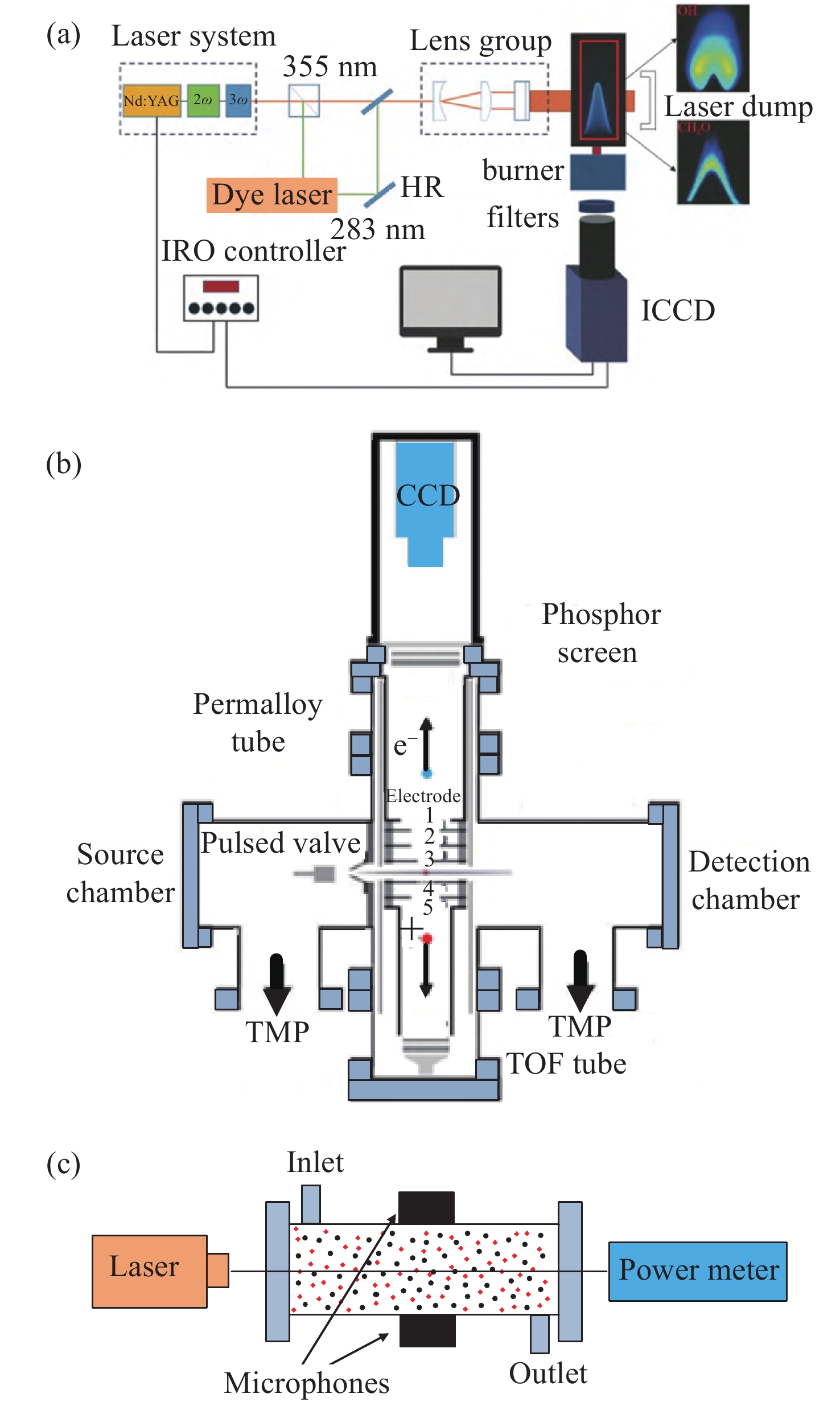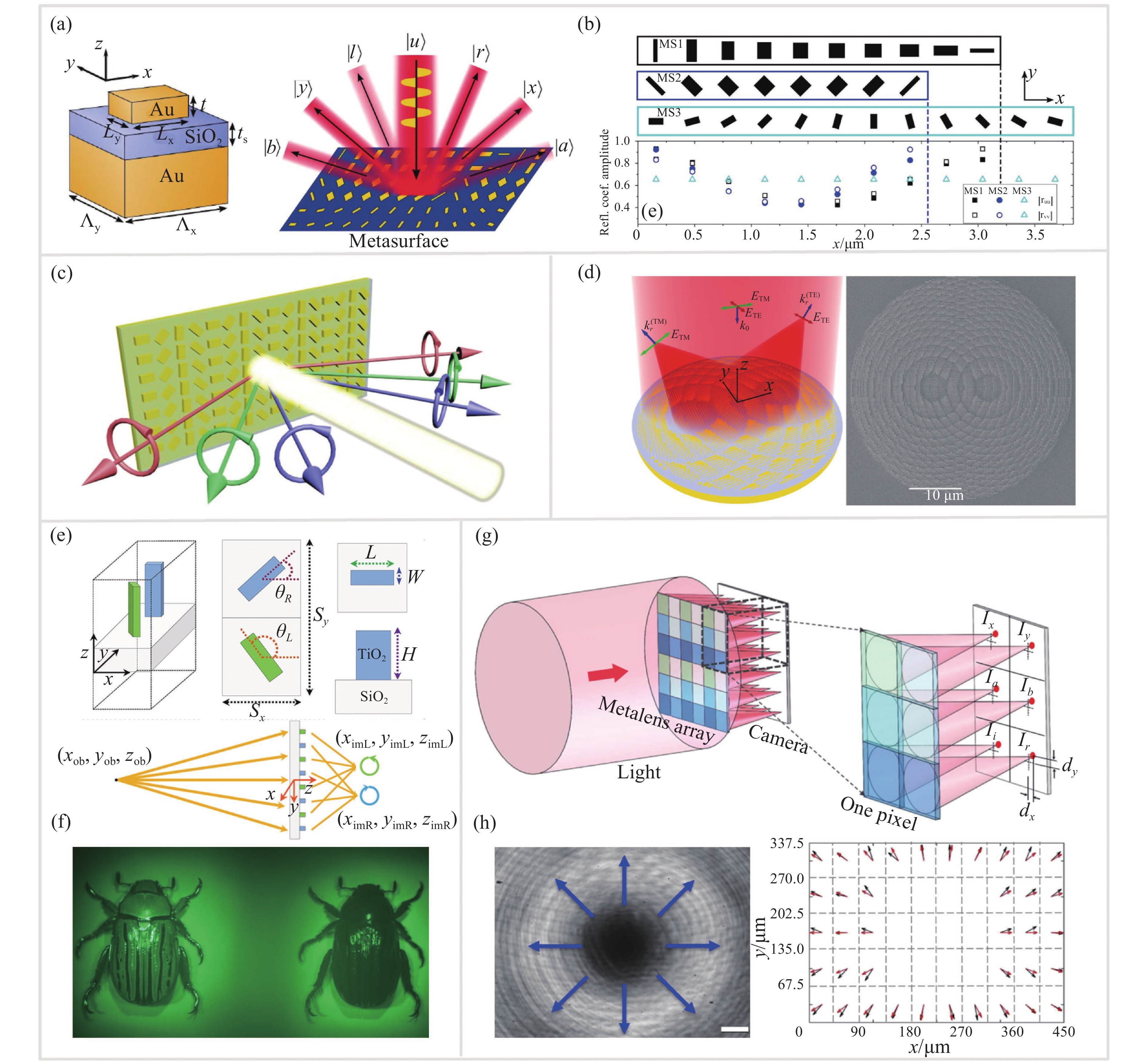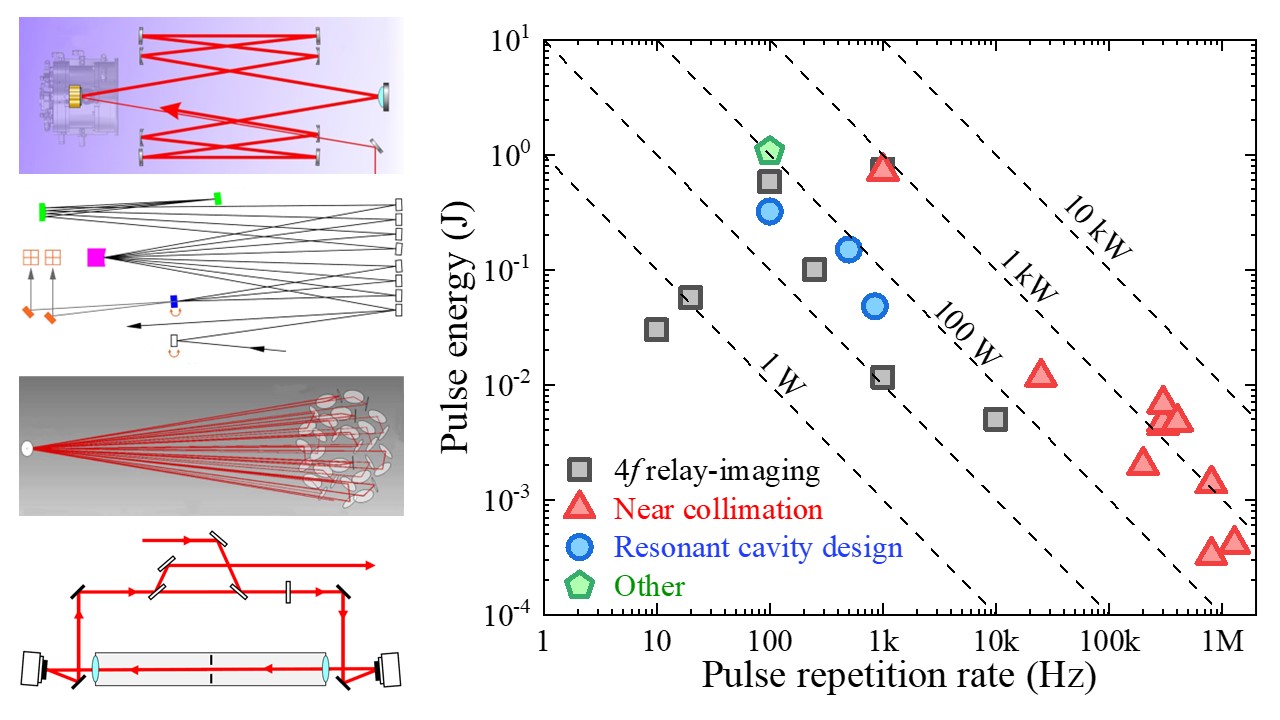Laser cleaning technology, as an efficient and environmentally friendly surface treatment method, plays significant application potential in the field of chip packaging molds cleaning. This research systematically investigated the influence of laser parameters (pulse duration, repetition frequency and average power) on the cleaning effect of chromium-plated mold surface epoxy encapsulation materials (EMC) contaminated by P20 alloy and ASP23 alloy. The experiment employed a
Extending the operational wavelength range of integrated optical devices to cover the entire visible spectrum holds significant importance, as it can enhance the detection accuracy and applicability of miniaturized spectrometers, broaden the bandwidth of visible light communication, and enable biosensors to simultaneously detect multiple biomolecules in complex samples. As the fundamental building block of integrated optical devices, waveguides have not yet been thoroughly investigated for full visible spectrum operation. This work presents a waveguide design supporting the full visible spectrum (435−760 nm). Numerical simulations were employed to analyze the transmission characteristics of various waveguide structures, revealing that single-mode propagation cannot be achieved across the entire visible spectrum. Under multimode propagation conditions, key parameters such as propagation loss and mode distribution were systematically examined to determine the optimal waveguide dimensions, bending radii, and waveguide spacings for low-loss transmission: For slab waveguides, a thickness ≥1 μm ensures polarization insensitivity. For strip waveguides with a thickness of 1 μm, a width ≥2 μm significantly reduces scattering loss induced by sidewall roughness. For strip waveguides with a width of 1 μm and thickness of 2 μm, radiation loss becomes negligible when the bending radius ≥10 μm and waveguide spacing ≥0.4 μm, while maintaining effective isolation from adjacent waveguides. Additionally, the impact of fabrication tolerances on waveguide performance was evaluated. In contrast to previous studies primarily focusing on narrow spectral bands within the visible range, the proposed design enables full visible spectrum transmission in a single waveguide, thereby facilitating bandwidth expansion and performance enhancement for on-chip full visible spectrum devices.
Optical image processing has the advantages of fast and parallel operation. One single-layered metasurface is designed to implement the optical imaging and edge detection of image. The dual-functional image processing is conducted without the aid of 4f system and it is switched only by the handedness of incident circularly polarized light. The designed metasurface consists of silicon nanopillars and the optimized nanopillars are equivalent to half-wave plates with the transmittance of 87%. The simulation and experimental results verify the performance of metasurface. The integrated optical metasurface enables the extremely simple image processing system and it paves the way for the applications of metasurfaces in parallel image processing and optical integrating.
High-precision detection of topological charge is significant for the practical applications of vortex beams. In view of the existing evaluation with low resolution of topological charge and more complexity to judge simultaneously integer and fraction, this paper theoretically proposes and numerically verifies the double judgment method for topological charge based on the designed metasurface. The inner and outer diffraction patterns of metasurface can judge the value and sign of topological charge. The detection precision of the proposed method reaches 0.05. The theoretic and simulated results give the solid verification for the effectiveness of the proposed method. This method has outstanding advantages including planar structure design without additional elements, direct judgment without data processing and high precision over the existing methods. We think this work is beneficial to the detection of topological charge and the applications of optical vortices.
This study investigates the impact of doping the non-fullerene small molecule IEICO-4F into the acceptor component of a planar heterojunction organic photodetector based on the P3HT : PC71BM system on the device's optoelectronic properties. The active layer films with different doping ratios were fabricated using a solution process. Characterization techniques including current-voltage measurements, external quantum efficiency, ultraviolet-visible-near-infrared absorption spectroscopy, and photoluminescence spectroscopy were employed, combined with atomic force microscopy to analyze morphological evolution. Experimental results demonstrate that the introduction of IEICO-4F significantly broadens the absorption spectrum of the active layer into the near-infrared region (700−900 nm) and enhances photon capture efficiency through complementary absorption. At an optimized doping ratio of 30%, the device's photocurrent density increased from 2.32×10−1 mA/cm2 to 4.50×10−1 mA/cm2, and the specific detectivity improved from 1.37×1012 Jones to 4.14×1012 Jones. Morphological analysis confirmed that IEICO-4F optimizes the phase distribution of PC71BM, forming a finer interpenetrating network structure that facilitates charge transfer and reduces series resistance. The study also revealed that excessive doping disrupts the phase separation balance, adversely affecting carrier separation and transport, leading to an imbalance in electron-hole transport. This work highlights the multifaceted regulatory effect of non-fullerene acceptor doping on traditional polymer:fullerene systems, effectively enhancing device performance through the synergistic mechanisms of spectral broadening and morphological optimization, thereby providing new insights for the design of organic photodetector material systems.
彩色编码条纹图案已成为实现条纹投影轮廓术实时三维形貌测量的重要方法。然而,彩色相机中的色彩串扰现象仍然是限制测量精度的主要因素。针对这一问题,本文提出了一种精确的色彩串扰系数标定方法,以实现有效的色彩串扰校正。首先,设计了一种基于正交相位条纹的串扰系数估计器,从理论上推到了色彩串扰系数与相位误差的关系。同时,将设计的彩色正交条纹图案投影至标准平面靶标,实现R、G、B的彩色通道分离图案。最后,基于粒子群优化算法拟合通道串扰相位误差,从而实现高精度色彩串扰系数标定。基于标准双球球板的测量实验验证,两个球体的直径拟合误差分别为0.0191mm和0.0160mm,球心间距的计算误差低至0.0120mm,证明该方法能够有效提高彩色相机在条纹投影技术中的测量精度和适用性。
We propose a novel fast numerical calculation method for the Rayleigh–Sommerfeld diffraction integral, which is developed based on the existing scaled convolution method. This approach enables fast calculations for general cases of off-axis scenarios where the sampling intervals and numbers of the input and observation planes are unequal. Additionally, it allows for arbitrary adjustment of the sampling interval of the impulse response function, facilitating a manual trade-off between computational load and accuracy. The errors associated with this method, which is equivalent to interpolation, primarily arise from the discontinuities of the sampling matrix of the impulse response function on its boundaries of periodic extension. To address this issue, we propose the concept of the padding function and its construction method, and we evaluate its effectiveness in enhancing computational accuracy. The feasibility of the proposed method is verified by numerical simulation and compared with the DI-method in a simplified scenario. It shows that the proposed method has good computational accuracy for the general case where the sampling interval of the input and observation plane is not equal under non-near-field diffraction, and when the diffraction distance is large, although the computational accuracy of the proposed method cannot exceed that of the DI-method, the computational amount can be significantly reduced with almost no effect on the computational accuracy. This method provides a general numerical calculation scheme of diffraction in the non-near field case for areas such as computational holography.
To achieve high-power and high-beam-quality laser output from a laser-diode side-pumped solid-state laser, this study investigates an unstable resonator incorporating a Gaussian output mirror. The boundary finite element method was utilized to analyze the effects of the resonant cavity length, Gaussian mirror membrane spot radius, and curvature radius on high-order mode suppression. The functional theory of mode loss difference was applied to determine the mode-matching range and the optimal parameters for the spot radius. Furthermore, an output power model was established to derive the theoretical optimal central transmittance for compensating loss. Based on the theoretical and simulation results, the resonator parameters were optimized, and the output beam’s mode distribution and quality were experimentally characterized using different Gaussian mirrors. Under the operational conditions of a 400 mm resonator length, 7.3 A pump current, and 100 Hz repetition frequency, the implementation of a Gaussian mirror with a 3 mm spot radius, 1.5 m curvature radius, and 17% central transmittance produced a high-quality
Objetive: In order to find out performance of the C-point dipole nested in partially coherent stochastic vortex beam in oceanic turbulence, the Gaussian-Schell model vortex (GSMV) beam carrying a C-point dipole is constructed, which is used to find out the evolution property of the C-point dipole in oceanic turbulence. Method: According to the definition of the polarization singularities from partially coherent vector beams, the GSMV beam carrying a C-point dipole is constructed. According to the extended Huygens–Fresnel principle, the formula of the cross-spectral density (CSD) for the GSMV beam propagating through oceanic turbulence is deduced by use of the integral formula. In accordance with the formula of the CSD derived above, the effects of propagation distance
We designed and investigated a passive synchronized mode-locked fiber laser. The device utilizes a dual-cavity structure driven by the Nonlinear Polarization Rotation (NPR) mechanism. Stable mode-locking is attained by synergistically controlling gain, polarization state, and optical path length in two symmetric sub-cavities. Experiments proved the sub-cavity repetition frequency's tunability via the time delay line (TDL), thereby enabling synchronized mode-locking. The system stably generates multi-wavelength pulses at a single repetition frequency, evidenced by multiple spectral peaks and equidistant pulse sequences. These findings facilitate the development of high-performance multi-wavelength ultrashort pulse sources, crucial for optical communications, spectral analysis, and remote sensing.
Noise interference is a critical bottleneck that affects the stability of sensing systems and the accuracy of data, and existing suppression strategies are unable to simultaneously reduce both inherent system noise and external environmental noise. To address this problem, this paper proposes a composite denoising method based on ameliorated ellipse fitting algorithm (AEFA) and adaptive successive variational mode decomposition (ASVMD). System noise, which is closely correlated with the direct-current (DC) and alternating-current (AC) components in the interferometric signal, is effectively suppressed in AEFA through the elimination of these components. Environmental noise components, which primarily reside in the demodulated phase signal, can be adaptively extracted by the SVMD technique. In order to automatically obtain the optimal decomposition results, the permutation entropy (PE) criterion is introduced to optimize the decomposition parameters. Correlation coefficient (CC) is used to distinguish between the effective components and noise components in the decomposition results. Experimental results indicate that the combined AEFA and ASVMD algorithm effectively suppresses both system and environmental noise. When applied to 50 Hz vibration signal processing, the proposed scheme achieves noise reduction of 17.81 dB and a phase resolution of 35.14 μrad/√Hz. Given the excellent performance of the noise suppression, the proposed scheme holds great application potential in high-performance interferometric sensing systems.
The two-dimensional grating serves as a critical component in plane grating interferometers for achieving high-precision multidimensional displacement measurements. The calibration of grating groove density and orthogonality error of grating grooves not only improves the positioning accuracy of grating interferometers but also provides essential feedback for optimizing two-dimensional grating fabrication. This study proposes a method for simultaneous calibration of these parameters using orthogonal heterodyne laser interferometry. A two-dimensional grating interferometer is built with the grating to be measured, and a biaxial laser interferometer provides a displacement reference for it. The phase mapping relationship between grating interference and laser interference is established. The interference phase information obtained by any two displacements can simultaneously solve the above three parameters and obtain the grating installation error. The feasibility of the proposed method is verified by using a 1200 gr/mm two-dimensional grating. The standard deviation of the grating groove density in the X and Y directions is 0.012 gr/mm and 0.014 gr/mm, respectively. The standard deviation of the orthogonality error of grating grooves is 0.004°, and the standard deviation of the installation error is 0.002°. Compared with the atomic force microscope method, the consistency of the grating groove density in the X and Y directions is better than 0.03 gr/mm and 0.06 gr/mm, and the orthogonality error of grating grooves is better than 0.008°. The experimental results show that the proposed method can be simply and efficiently applied to the calibration of the grating line parameters of the two-dimensional grating.
Optical surface particulate contamination detection is critical to maintaining the imaging performance of space telescopes. Conventional approaches typically employ dark-field scattering microscopy to capture particle images, where particle size is estimated from the circumcircle of the particle’s contour. However, this method requires precise focusing during image acquisition and is prone to large errors when dealing with irregularly shaped particles. To address these limitations, this paper introduces a novel sizing method based on defocus-induced blur circles. By exploiting the relationship between particle size and its scattered light energy, the defocused dark-field scattering image of a particle is transformed into a blur circle, whose properties can be analyzed to determine the actual particle size. Unlike conventional contour-based measurements, the blur-circle approach is inherently less sensitive to particle shape irregularities and system defocus. Experimental validation demonstrates that the proposed method achieves high sizing accuracy across varying defocus distances. Compared with traditional dark-field scattering microscopy, the average measurement error for irregularly shaped particles is significantly reduced—from 58% to 10.3%. These results confirm both the feasibility and effectiveness of the blur circle method in improving measurement precision for irregular particulate contaminants.
In wide-temperature-range applications, traditional optical systems often struggle to maintain stable imaging quality, primarily because conventional athermal design methods fail to fully account for the differences in the linear expansion coefficients and refractive index temperature coefficient of glass materials at high and low temperatures. To address this issue, this paper proposes an athermal design method for wide temperature ranges. By reconstructing the thermal aberration modeling process, the method accurately characterizes the nonlinear response of thermal aberrations to temperature variation, thereby selecting glass material combinations that minimize the overall thermal optical power within the wide temperature range. In combination with the thermal expansion properties of the housing material, it effectively suppresses system focal shift. To validate the effectiveness of the proposed method, an optical system with a focal length of 100 mm, an F-number of 2.2, and a field of view of 7° was designed. Simulation results show that within the temperature range of −30°C to 270°C, the system consistently maintains high imaging performance. The modulation transfer function (MTF) remains above 0.5 at 56 lp/mm across all fields and temperatures, the spot diameter is less than 9 μm, and more than 90% of the energy is enclosed within an 18 μm circle. The above results fully verify the effectiveness of the proposed method and provide strong support for athermal design of optical systems under wide temperature ranges. Meanwhile, the method demonstrates good engineering adaptability and shows broad application prospects in the design of imaging systems for complex environments.
Terahertz (THz) spectroscopy technology has demonstrated great application value in the field of organic and biological macromolecule detection. However, the traditional sample pressing method cannot be applied in the actual detection of trace analytes, and additional structures are required to enhance the interaction between the analytes and THz waves. To solve this problem, this paper proposes a terahertz absorption spectrum enhancement structure based on stacked one-dimensional photonic crystal (One-dimensional photonic crystals, 1D-PCs) defect cavities. The structure employs metal parallel-plate waveguides to separate a series of one-dimensional photonic crystals (1D-PCs) with defect cavities of varying widths, and coats the sample film on a substrate that penetrates all defect cavities. The incident broadband terahertz wave can simultaneously excite multiple resonant peaks at different frequencies corresponding to the photonic crystal defect modes in different layers. The enhanced terahertz absorption spectrum of the analyte can be obtained by linking the envelope formed by these resonant absorption peaks. The simulation results show that a 0.1 μm α-lactose sample can accomplish an absorption enhancement factor of approximately 303 times in the frequency range of 0.49 to 0.57 THz. This method offers fast measurement speed and maintains a relatively low sample amount, providing an effective strategy for the enhancement detection of trace analytes by terahertz absorption spectrum.
Image Photoplethysmography (IPPG) signals are easily disturbed by noise during acquisition. To address the issue, this study proposes a denoising diffusion probability model for IPPG (DDPM-IPPG). This model eliminates baseline drift and noise through diffusion and reverse diffusion stages. This improves the signal-to-noise ratio and heart rate accuracy. First, Gaussian noise is gradually added to the photoplethysmography (PPG) signal during the diffusion phase to create a noise sequence. A noise predictor based on a nonlinear fusion module and a bridging module is trained. Subsequently, in the reverse diffusion phase, the well-trained noise predictor is employed. It performs step-by-step denoising on the initially extracted IPPG signal. Through this denoising, a signal with high signal-to-noise ratio is recovered. The model proposed in this paper is validated and compared on the PURE, UBFC-IPPG, UBFC-Phys, and MMPD datasets. The experimental results show the following. Compared with the existing highest-precision extraction method, DDPM-IPPG improves the signal-to-noise ratio by 1.06 dB on the PURE dataset. The mean absolute error of heart rate decreases by 0.24 bpm. The root mean square error of heart rate decreases by 0.41 bpm. On the UBFC-IPPG dataset, the signal-to-noise ratio improved by 1.50 dB. The proposed DDPM-IPPG model reaches the current advanced level. It excels in eliminating baseline drift and noise of IPPG signals. It can approximate real signals more accurately. In turn, it provides a more reliable data foundation. This foundation supports physiological health assessment and telemedicine monitoring.
Multi-band infrared detectors can simultaneously capture radiation information across multiple wavelengths, offering significant advantages over single-band infrared detectors in target recognition, classification, temperature measurement, and information extraction. Consequently, they have become a central focus of infrared detector technology research. As a key optical component of multi-band infrared detectors, the performance of the three-band large-aperture wide-angle infrared mirror directly determines detection accuracy. In the design phase, this study selected three materials: Ge, ZnS, and YbF3, based on high-reflectivity coating design principles, and optimized a structurally robust infrared reflector coating system through spectral superposition combined with TFCalc software. During the preparation stage, ion-source-assisted deposition was employed, and the issue of film delamination was resolved by optimizing the deposition process. During spectral testing, problems related to spectral drift in the samples were addressed through film thickness error experiments and optimization of the YbF3 process. Test results indicate that, at an incident angle of 45°, the infrared mirror achieves an average reflectance of 96.93% in the 3−5 µm spectral band, 96.54% in the 8−12 µm spectral band, and 94.64% in the 1.064 µm spectral band, the spectral non-uniformity within the 270 mm×270 mm aperture for the 3−5 µm and 8−12 µm spectral bands is 4.83%. In accordance with the national standard GJB 2485A-2019 (Environmental Test Standard), the prepared samples successfully passed adhesion and high and low temperature tests, meeting the application requirements for multi-band infrared detectors.
Off-axis reflective optical systems are widely employed in Earth observation and mapping owing to their advantages of wide field of view (FOV), high image quality, and stable interior orientation elements. However, conventional designs based on the point-by-point (PW) method often suffer from degraded off-axis imaging performance and thermally induced pointing drift. In this study, the third-order aberration coefficients of a three-mirror optical system are analytically derived under the condition that the aperture stop is located at the secondary mirror and that the primary and tertiary mirrors are equally spaced along the optical axis. To further enhance imaging performance, fourth-order aspheric terms are introduced on both the primary and tertiary mirrors, thereby increasing the degrees of freedom for optimization. A comprehensive image-quality evaluation function incorporating quasi-telecentric constraints is constructed, and a hybrid genetic algorithm-sequential quadratic programming (GA-SQP) approach is employed to obtain an optimized initial configuration. The resulting system achieves a focal length of 260 mm, an F-number of 10, and a 7° × 30° FOV, with a modulation transfer function (MTF) above 0.25 at 77 lp/mm, a maximum distortion of 2%, and a maximum chief-ray angle of 2.3°. Microcrystalline glass and titanium alloy are adopted as the mirror substrate and structural materials, respectively. Finite-element thermal analysis is performed under a 6.8 °C temperature gradient, and the optical axis rotation, evaluated using the TRIAD algorithm, is −0.728″ about the X-axis,
Conventional microwave antennas are constrained by the diffraction limit, making it challenging to breakthrough the constraint of wavelength-scale, which hinders their application in high-resolution microwave sensing and detection. To overcome this limitation, this study designs an all-dielectric integrated meta-antenna with super diffraction-limited performance. First, the antenna surface is functionalized using an asymmetric scattering meta-grating array based on the generalized Snell's law, enabling efficient subwavelength beam focusing through precise electromagnetic wavefront manipulation. Then, the geometrical structural of the metagrating is optimized to achieve high-efficiency wavefront control. Finally, the electric field intensity distribution and size of the generated focal spot are analyzed. The simulation results demonstrate that the highest manipulation and diffraction efficiencies reach 98.50% and 72.56%. The achieved focal spot exhibits a subwavelength dimension below 0.73
With the rapid development of space laser communication technology, the demand for high-speed inter-satellite networking has been growing significantly. However, existing research on inter-satellite laser communication payload is still primarily experimental, featuring complex optical system designs that require lengthy and costly processes for manufacturing, alignment, and testing—posing challenges for low-cost and rapid mass production. To address this issue, a transmissive optical antenna with single-band achromatic design is proposed in this paper, along with a rapid alignment method for measuring the magnification of the optical antenna based on a collimator. By narrowing the chromatic aberration correction range, the length of the optical antenna was reduced by 15.83%, the number of lenses was decreased from six to four, and the manufacturing cost of a single optical antenna was reduced by 33.33%. Simulation results indicate that the alignment tolerance range for magnification is 4.37 to 5.08. After actual alignment, the measured magnification is 4.82, with a beam divergence of 67.53 μrad on the transmission path and a coupling efficiency of 51.42% on the receiving path. The self-calibration spot size is within 12×12 pixels. A comparative experiment is also conducted, and the alignment time of the proposed method is within 10% of that required by the interferometer method. The alignment and test results demonstrate that the proposed method not only enables a lightweight and compact design of the optical antenna, but also significantly reduces the alignment time. Simultaneous focal alignment of signal transmission, acquisition-pointing-tracking, and self-calibration optical paths is also achieved.
Addressing the critical challenge of thermal radiation noise suppression in infrared systems for long-range dim target detection, this paper presents a composite detection system with an optimized cooling-based thermal radiation suppression scheme. A common-aperture optical configuration capable of simultaneous long-wave infrared and laser dual-band detection is achieved through a Ritchey-Chrétien (R-C) optical structure and a dichroic-secondary mirror with a hollow design. To mitigate thermal radiation noise, the thermal emission characteristics within the temperature range of 230 K to 320 K were analyzed using Planck’s law and non-sequential ray tracing. An improved detection range model incorporating noise terms was developed. The cooling strategy was optimized via dynamic programming, leading to an optimal solution where the main mirror and folding mirror baffles are cooled to 220 K. Experimental results demonstrate that the detection range at 300 K ambient temperature increases from 300 km to 430 km, and remains above 400 km across the entire 230−320 K range. The proposed dual-band composite detection scheme and zoned cooling methodology provide a valuable reference for the design of cold optical systems and long-range weak target detection.
An alternative elliptical and circle air-hole-assisted Al0.24Ga0.76As photonic crystal fiber (PCF) was proposed for generating broadband high-coherence mid-infrared supercontinuum, and the dispersion, effective mode area and nonlinear coefficient were investigated by using finite element method (FEM), the evolution of optical pulses propagating along the fiber was simulated, and the supercontinuum and the coherence were analyzed and evaluated under different pumping conditions. The results show that a supercontinuum spectrum with a spectral width of 4.852 μm can be obtained in the proposed fiber with
This study investigates the reduction in polarization measurement accuracy caused by varying incident angles in a liquid crystal variable retarder (LCVR). The phase delay characteristics of the LCVR were examined, with particular emphasis on the influence of different two-dimensional incident angles on phase delay behavior. Building upon the calibration of phase delay under normal incidence, a phase delay calibration model was developed to account for variations in incident angle and driving voltage. A mathematical relationship was established between phase delay and the azimuth angle (
To address the challenges of complex metallic film coating processes and low integration in single-parameter detection for existing photonic crystal fiber surface plasmon resonance (PCF-SPR) sensors, a dual-parameter sensor based on gold nanowire-integrated bias-core PCF-SPR is proposed. Unlike conventional in-hole coatings or metallic film structures, the gold nanowires are directly attached to the fiber cladding via chemical vapor deposition (CVD), eliminating uneven coating issues and significantly simplifying fabrication. By optimizing the asymmetric bias-core fiber structure and leveraging the strong localized field enhancement of gold nanowires, the sensor achieves high-sensitivity synchronous detection of temperature (25−60 °C) and refractive index (1.31−1.40) in dual-polarization modes. The simulation results demonstrate that the x-polarization mode can achieve 1.31−1.40 refractive index detection with maximum wavelength sensitivity and amplitude sensitivity of
AlGaN-based deep-ultraviolet (DUV) laser diodes (LDs) face performance challenges due to electron leakage and poor hole injection, often worsened by polarization effects from conventional electron blocking layers (EBLs). To overcome these limitations, we propose an EBL-free DUV LD design incorporating a 1-nm undoped Al0.8Ga0.2N thin strip layer after the last quantum barrier. Using PICS3D simulations, we evaluate the optical and electrical characteristics. Results show a significant increase in effective electron barrier height (from 158.2 meV to 420.7 meV) and a reduction in hole barrier height (from 149.2 meV to 62.8 meV), which enhance carrier injection and reduce leakage. The optimized structure (LD3) achieves a 14% increase in output power, improved slope efficiency (1.85 W/A), and lower threshold current. This design also reduces the quantum confined Stark effect and forms dual hole accumulation regions, improving recombination efficiency. Our findings present a promising approach for high-performance, EBL-free DUV LDs suitable for high-power applications.
Standard bacterial suspensions play a crucial role in microbiological diagnosis. Traditional preparation methods, which rely heavily on manual operations, face challenges such as poor reproducibility, low efficiency, and biosafety concerns. In this study, we propose a high-precision automated colony extraction and separation system that combines large-field imaging and artificial intelligence (AI) to facilitate intelligent screening and localization of colonies. Firstly, a large-field imaging system was developed to capture high-resolution images of 90 mm Petri dishes, achieving a physical resolution of 13.2 μm and an imaging speed of 13 frames per second. Subsequently, AI technology was employed for the automatic recognition and localization of colonies, enabling the selection of target colonies with diameters ranging from 1.9 to 2.3 mm. Next, a three-axis motion control platform was designed, accompanied by a path planning algorithm for the efficient extraction of colonies. An electronic pipette was employed for accurate colony collection. Additionally, a bacterial suspension concentration measurement module was developed, incorporating a 650 nm laser diode as the light source, achieving a measurement accuracy of 0.01 McFarland concentration (MCF). Finally, the system’s performance was validated through the preparation of an E. coli suspension. After 17 hours of cultivation, E. coli was extracted four times, achieving the target concentration set by the system. This work is expected to enable rapid and accurate microbial sample preparation, significantly reducing detection cycles and alleviating the workload of healthcare personnel.
Filters, as a key component in the photoelectric detection system, can simplify the optical system and improve detection efficiency. Based on the usage requirements, a visible/near-infrared filter film with up to 5 wavebands needs to be designed and prepared, while simultaneously satisfying high reflection in 2 wavebands and high transmittance in 3 wavebands. Therefore, we have conducted a systematic study on the film design, thin film preparation process, and control accuracy of film layer thickness. In this work, the short-wave pass film system is superimposed with the long-wave pass film system, and the number of cycles and matching coefficient of the film system are tuned to meet the requirements of cut-off band. Additionally, Smith method was used to match bandpass film system to optimize the transmission band and complete the visible/near infrared multiband laser filter film design. In the preparation process, combined with the sensitivity of the film layer, inverse analysis is used to invert the film layer monitored by each optical monitoring chip. The optical control scheme with weak optical signal in the monitoring process is simulated and corrected, and the monitoring wavelength with stronger optical signal is matched, resulting in an improvement of the control accuracy for the film thickness and the transmittance in the specified wavelength range. Ultimately, the actual physical thickness is 9.66 μm, and the error with the theoretical design thickness is less than 0.4%, and the transmittance of the specified 3 wavebands exceeds 99%. The average transmittance of the cut-off bands at the 455−500 nm and 910−
The dual-wavelength image plane digital holography is employed to achieve the long-distance topography measurements, which is expected for the Examination and Analysis System Technology (EAST) in divertor surface monitoring. The same-path design for the illumination and imaging beams is suitable for the upper diagnosis channel of the tokamak device. By selecting two wavelengths with a gap of 1.02 nm, the measurement range of system is extended to 276.87 µm, allowing for 138.44 µm gradient measurements. Experimental results demonstrate that the measurement error of the system for a step with a nominal high of 80 μm is 7.00%, with a minimum detectable height variation of 10 μm. Furthermore, confirm the long-distance measurement capability of the system, and off-line measurements were conducted on a dismantled divertor from a tokamak device. Which proves the system can be applied to the topography measurements of the divertor.
The Savitzky-Golay (SG) filter, which employs polynomial least-squares approximations to smooth data and estimate derivatives, is widely used for processing noisy data. However, noise suppression by the SG filter is recognized to be limited at data boundaries and high frequencies, which can significantly reduce the signal-to-noise ratio (SNR). To solve this problem, a novel method synergistically integrating Principal Component Analysis (PCA) with SG filtering is proposed in this paper. This approach avoids the issue of excessive smoothing associated with larger window sizes. The proposed PCA-SG filtering algorithm was applied to a CO gas sensing system based on Cavity Ring-Down Spectroscopy (CRDS). The performance of the PCA-SG filtering algorithm is demonstrated through comparison with Moving Average Filtering (MAF), Wavelet Transformation (WT), Kalman Filtering (KF), and the SG filter. The results demonstrate that the proposed algorithm exhibits superior noise reduction capabilities compared to the other algorithms evaluated. The SNR of the ring-down signal was improved from
Due to the inability of manufacturing a single monolithic mirror at the 10-meter scales, segmented mirrors have become indispensable tools in modern astronomical research. However, to match the imaging performance of the monolithic counterpart, the sub-mirrors must maintain precise co-phasing. Piston error critically degrades segmented mirror imaging quality, necessitating efficient and precise detection. To address the limitations that the conventional circular-aperture diffraction with two-wavelength algorithm is susceptible to decentration errors, and the traditional convolutional neural networks (CNNs) struggle to capture global features under large-range piston errors due to their restricted local receptive fields, this paper proposes a method that integrate enhanced Young’s interference principles with a Vision Transformer (ViT) to detect piston error. By suppressing decentration error interference through two symmetrically arranged apertures and extending the measurement range to ± 7.95 μm via a two-wavelength (589 nm/600 nm) algorithm, this approach exploits ViT’s self-attention mechanism to model global characteristics of interference fringes. Unlike CNNs constrained by local convolutional kernels, the ViT significantly improves sensitivity to interferogram periodicity. The simulation results demonstrate that the proposed method achieves a measurement accuracy of 5 nm (
In recent years, the demand for synchronous acquisition of three-dimensional (3D) shape and color texture has surged in fields such as cultural heritage preservation and healthcare. Addressing this need, this paper proposes a novel method for simultaneous 3D shape and color texture capture. First, a linear model correlating camera exposure time with grayscale values is established. Through exposure time calibration, the projected red, green and blue (RGB) light and white-light grayscale values captured by a monochrome camera are aligned. Then, three sets of color fringes are projected onto the object to identify optimal pixels for 3D reconstruction. And, three pure-color patterns are projected to synthesize the color texture. Experimental results show that this method effectively achieves synchronous 3D shape and color texture acquisition, offering high speed and precision. And using a monochrome camera avoids color crosstalk interference common in 3D reconstruction of colored objects.
Diffractive waveguides have emerged as a particularly promising solution for augmented reality (AR) near-eye display technologies. These waveguides are characterized by their light weight, wide field of view, and large eyebox. However, most commercially available AR waveguide simulation software has been developed by foreign companies, and there has been little advancement in domestic 3D visualization software for optical waveguide design and simulation. The present study is, to the best of our knowledge, the first to develop 3D visualization module for optical waveguide design and simulation based on ray-field tracing. Using this module, a two-dimensional exit-pupil-expansion diffractive waveguide has been designed, and a systematic design workflow is demonstrated. The workflow integrates
Atmospheric coherence length is a critical indicator of the impact of atmospheric turbulence on free-space optical communication links. This paper proposes a novel strategy for measuring atmospheric coherence length by utilizing extended targets as the information source. Specifically, the method integrates the wavefront structure function approach with the extended target offset algorithm to directly estimate the atmospheric coherence length. Traditional methods, such as the Differential Image Motion Monitor (DIMM), typically rely on guide star targets, which are difficult to set appropriately in horizontal communication links, thereby limiting their effectiveness in practical applications. In contrast, employing extended targets as direct detection targets provides a feasible solution for measuring atmospheric coherence length. The paper first reviews the principles and current research status of mainstream algorithms, emphasizing the reliance of existing algorithms on guide star targets and their limitations in horizontal links. Subsequently, we propose a new measurement scheme that combines the improved normalized cross-correlation algorithm with the wavefront structure function method to estimate atmospheric coherence length under extended targets scenarios. In comparison to traditional measurement methods, our approach enables coherence length measurement based on extended targets in horizontal links, thereby significantly reducing system complexity and equipment costs. To validate the effectiveness and measurement accuracy of the proposed method, both simulations and experiments were designed and conducted. The results demonstrate that the coherence length values measured by this method are highly consistent with those obtained using the DIMM method and the wavefront phase variance method, with a measurement accuracy error of approximately 4%. This indicates that the proposed method can effectively assess atmospheric coherence length, thereby providing a valuable reference for enhancing the reliability of free-space laser communication systems.
Metalenses are subject to off-axis aberrations and material dispersion, which fundamentally limit their ability to achieve both wide field-of-view (FOV) and broad operational bandwidth in imaging detection systems. In this paper, an achromatic monolayer metalens with an elongated FOV in a continuous waveband is constructed using an elaborately designed metasurface. By leveraging a quadratic phase profile for large-field-of-view (FOV) detection, the metasurface unit structure transmission phase is subsequently optimized via particle swarm optimization (PSO) to achieve continuous band dispersion tuning. This approach consequently enables expanded operational bandwidth under wide-FOV conditions. For a monolayer metalens with a numerical aperture of 0.351, an achromatic focusing field covering a ±20° FOV is obtained within the continuous waveband from 0.55 μm to 0.65 μm. The maximum focal length deviation along the optical axis is 3.2 μm (~0.08
To evaluate the laser-induced damage effects on visible-light imaging systems under realistic operational conditions, a detector module comprising a filter and a back-illuminated CMOS sensor was employed as the target. This study investigates the damage mechanisms induced by nanosecond pulsed lasers at wavelengths of 532 nm and
Addressing the urgent demand for
Laser absorption spectroscopy (LAS) has been widely applied in atmospheric monitoring, industrial production, medical diagnostics, and other fields due to its high sensitivity, rapid response, and real-time online detection capabilities. However, spectral overlap interference remains a major challenge in LAS. In this study, a multispectral line spectral analysis approach based on cavity ring-down spectroscopy (CRDS) is proposed. A CRDS gas detection system was developed using a custom-designed cage-type Fabry-Pérot cavity, and seven acetylene (C2H2) absorption lines in the range of
In order to investigate the imaging function of metasurface based on geometric phase theory, this article deduces the imaging formulation of arbitrary curve with the theory of geometric phase imaging on metalens, and its feasibility and correctness is verified by scalar diffraction theory. The imaging formulation is further applied in polarization detection of the incident beam. The results show that phase manipulation of metasurface based on geometric phase can achieve the functions of arbitrary curve imaging and polarization detection of the incident beam, which is of great significance in the field of holographic imaging, optical communication and quantum science.
Time-domain diffuse optical imaging (TD-DOI) is an advanced tissue optical imaging technique. Utilizing a time-correlated single-photon counting (TCSPC) system, it enables the quantitative reconstruction of tissue absorption and scattering coefficients. This facilitates the precise assessment of key physiological parameters, such as tissue oxygen metabolism and blood perfusion. However, due to the inherent hardware complexity and high cost of TCSPC systems, it is currently challenging to meet the requirements for scaled, multichannel, dynamic in vivo monitoring in clinical settings. This paper develops a dual-channel differential hybrid trigger and reference signal strategy. By integrating a differential time-to-digital converter (TDC) device with photon counting technology, we construct a stable and reliable time point spread function (TPSF) measurement system. This system achieves sub-nanosecond precision in calibrating the time delay between the laser synchronization signal and emitted photon signals. Experimental validation demonstrates a system temporal resolution of 55 ps. At a photon count rate of 2.3 × 104 photons per second, the TPSF fluctuation coefficient remains below 1.35% (with an integration time of 1 s). Optical parameter inversion tests on tissue-simulating phantoms demonstrate average inversion errors of 5.39% for the absorption coefficient and 4.34% for the reduced scattering coefficient. This technological approach significantly advances the feasibility of multichannel parallel detection for TD-DOI. It is particularly suitable for biomedical applications demanding dynamic monitoring, such as cerebral cortical hemoglobin oxygen saturation, and lays the technical groundwork for developing next-generation wearable optical brain functional imaging devices.
With the breakthrough progress of mid-wave and long-wave infrared hyperspectral imaging technology, the military hyperspectral imaging system, with its unique feature recognition capability and covert reconnaissance advantages, has demonstrated significant strategic value in the field of modern battlefield situational awareness. In this study, a dual-band Offner-type spectral imaging system operating in the mid-wave infrared (3.7−4.8 μm) and long-wave infrared (7.7−9.5 μm) is designed for aerial detection applications based on a 320×240-pixel dual-color cooled infrared detector. The system adopts a hybrid refractive and refractive-reflective optical structure, and realizes a three-field-of-view switching zoom function of 32 mm, 200 mm and 800 mm. The optical system adopts the Offner spectroscopic structure, which effectively suppresses the primary aberration of the system; secondly, through the introduction of the secondary imaging relay system, it achieves 100% cold diaphragm matching and significantly reduces the cold reflection effect. Experimental tests show that the system exhibits excellent imaging performance in all bands and at different focal lengths. At a characteristic frequency of 17 lp/mm, the modulation transfer function approaches the diffraction limit, and temperature changes have little effect on imaging quality, meeting design specifications for optical image quality. The optical system is characterized by wide spectral response, large magnification ratio (25×) and fast field of view switching. The spectral resolution reaches 25 nm, and its imaging quality and spectral resolution meet the technical requirements of aviation photoelectric reconnaissance, which has important application value in military reconnaissance, security monitoring and environmental monitoring.
During the research and development process of the scientific research project, it was found that the beam deviation angle formula of a Rochon prism in classical optical literatures (for negative crystals) was incorrect. Therefore, an accurate expression for the beam deviation angle of a Rochon prism was derived (distributed for negative and positive crystals), and the problem of design in the optical systems containing a Rochon prism in the scientific research projects was solved. In response to the problem of small angles between the two output beams of light in general a Rochon prism products, the expressions for the deviation angles of a Rochon prism composed of negative and positive crystals, respectively, were analyzed and derived. In addition, the deviation angles of a Rochon prism composed of different crystal materials were analyzed and the expression was derived. By calculating and comparing with actual data, it is known that the beam deviation angle of a Rochon prism made of different crystal materials is significantly higher than that of a Rochon prism made of the same crystal material. For applications in the ultraviolet band, a specific design example of a large beam deviation angle for a Rochon prism composed of heterogeneous crystal materials is provided. This type of a Rochon prism is composed of heterogeneous crystal materials, and according to the appropriate crystal arrangement order, a relatively large beam deviation angle can be obtained under the limitation of reasonable crystal thickness, which is obviously beneficial for the structural design of the polarization instruments and equipments.
To improve the processing efficiency of large-aperture optical components, a multi-robot, multi-tool collaborative processing method was proposed. A collaborative layout that has been tailored to the optical components was designed, and three feasible trajectories were simulated for analysis. The discrete simulation results were then used to establish principles for selecting trajectory parameters. To address the limitation of discrete simulation in capturing the influence of trajectory continuity on the surface map, an integral removal function model adapted to the motion mode was introduced. Furthermore, a collaborative machining obstacle avoidance strategy was developed. The experimental results obtained using the optimal trajectory demonstrated that for an optical component with an initial surface shape of PV=18.310
Stripe projection technology is widely used in 3D measurement and surface morphology reconstruction, where phase quality is a critical determinant of measurement accuracy. However, the nonlinear relationship between input and output light intensity is a major source of phase error. To address this issue, this paper introduces a novel system nonlinear active correction method. This method captures the variation pattern between input and output light intensity by projecting a small number of uniform gray-scale images onto a standard plane. This pattern is then integrated with active system nonlinear correction to construct a system nonlinear model based on the input-output light intensity variation. Genetic algorithms are used to optimize the coding values, which are then used to actively correct the projected fringes via fringe coding. The corrected fringes effectively reduce the influence of nonlinear effects, thereby significantly improving the quality of phase acquisition. To validate the proposed method, computer simulations were performed using three-step phase shifting. The results showed an 88% reduction in the standard error and an 85.5% reduction in the maximum error. In actual standard plane experiments, the corrected standard phase error decreased from
To achieve the recognition and 3D reconstruction of space target components in complex, low-texture environments for space situational awareness tasks, we propose an end-to-end intelligent perception framework for space targets based on deep learning. This framework enables intelligent recognition and high-precision 3D reconstruction of key space target components. First, based on the lightweight YOLOv11s network, an attention mechanism is introduced to focus features, achieving precise localization and recognition of space targets and their key components while ensuring real-time performance. This facilitates the extraction of target regions for accurate 3D reconstruction. Subsequently, a novel 3D reconstruction algorithm named Sat-TransMVSNet, specifically designed for low-texture space targets, is proposed. This algorithm employs a multi-scale feature enhancement network for feature extraction and utilizes a novel cost volume regularization method to strengthen geometric constraints at space target edges. It incorporates a background-suppression and foreground-enhancement module, combined with a dynamic depth sampling strategy, to accurately reconstruct space targets. Finally, the overall framework is tested using a self-built multi-angle space target dataset comprising various types. Experimental results indicate that the component recognition algorithm achieves an mAP50 of 0.95, and the comprehensive 3D reconstruction error is
Catadioptric space cameras are widely used in space exploration. However, temperature variations can degrade their imaging performance. To address this issue, we present an athermal design for a catadioptric space camera operating over a wide temperature range. Initially, the temperature effects on optical elements, mechanical structures, and other components were analyzed, and convenient methods for thermal aberration compensation are summarized. Subsequently, taking a camera with a spectral range of 400–
Stray light interference in vehicular LiDAR systems can reduce the signal-to-noise ratio and degrade detection efficiency. To mitigate this issue, this paper proposed a surface scattering modeling method based on the spectral power density function and total integrated scattering, which fits the bidirectional reflectance distribution function (BRDF) for various material surfaces. The model calculation results were highly consistent with the measured BRDF data, verifying the effectiveness of the method. Based on this model, the study systematically analyzed the sources and propagation paths of stray light in the long-focal-length receiving optics of vehicular LiDAR, with specific attention to scattering from the housing's inner walls, lens edges, and spacer ring surfaces. According to the simulation results, we put forward a number of stray light suppression measures, such as using structural components made of low-scattering materials, coating anti-reflection films on lens surfaces, and applying light-absorbing ink to the non-optical areas of lenses, etc. Furthermore, from optical design, signal processing and engineering optimization, the stray light suppression level of this LiDAR receiving optical system was evaluated in multiple dimensions. The experiment results showed that the level of stray radiation in the optimized system was significantly reduced. The point source transmittance (PST) outside the imaging field of view was reduced from 1×100 to 1×10−5, the PST in the field of view was reduced from 1×102 to 1×10−1, and the stray light contrast with the target signal was controlled below 1×10−4. Additionally, the intensity of the detected echo signal is significantly improved, thereby effectively enhancing the detection performance of the LiDAR. This study provides a theoretical model and practical solutions for stray light suppression in vehicle-mounted LiDAR, offering valuable references for the design and optimization of high-sensitivity optical systems.
To address the interference and dazzling threats posed by high-power lasers to the imaging performance photoelectric of detectors, this paper proposes and validates a dynamic laser interference suppression method based on regional flipping of digital micromirror device (DMD). This method employs a secondary imaging optical path, placing the DMD at the primary image plane. Through real-time identification and flipping of micromirrors corresponding to the laser interference region, high-power interference energy is deflected out of the main optical path, thereby protecting the detector while retaining effective image information of most of the field of view. First, we verified the feasibility of this scheme through optical simulations, and subsequently built an experimental platform for systematic testing. Furthermore, this study quantitavily analyzes the influence of the mask radius, which controls the flipping of the DMD, on the suppression effect. It verifies that the optimal suppression effect is achieved when the flipped region is larger than the interference spot. Experimental results demonstrate that DMD regional flipping nethod can effectively suppress laser interference with different laser powers and incident angles. Compared with the scenario without suppression, the interference power received by the detector is significantly reduced: when the laser is incident off-axis, the laser interference resistance threshold is increased by more than 28.5 dB; when the laser interference is incident parallel to the optical axis, the laser interference resistance threshold can be enhanced by over 30 dB. In comparison with traditional image processing methods, this method can retain as much image information as possible under scenarios of strong light interference. This technology provides an efficient and concise solution for photoelectric systems to maintain stable imaging in strong light interference environments.
To address the demand for large field-of-view and high compactness in lightweight AR glasses equipped with cameras, this study proposes an optical design method incorporating a curved image plane. First, the curved image plane imaging system is theoretically analyzed according to Gaussian optics theory. The Petzval surface curvature characteristics of various optical configurations are derived, and the performance advantages of the curved image plane are highlighted through comparative simulations of dual systems. Then, a wide-field and compact optical system is designed using a segmented multi-objective optimization strategy. Finally, image quality evaluation and tolerance analysis are performed on the designed system. The compact optical system comprises five aspheric plastic lenses and a rear-mounted filter. It features a focal length of 3.1 mm, a field of view (FOV) up to 80°, and a total system length of only 4.07 mm. The design results show that the modulation transfer function (MTF) exceeds 0.32 across all fields. The maximum RMS spot radius is 2.41 μm, with a distortion of only 2.5%, and the relative illumination remains above 45% across the entire field at 223 lp/mm. This work lays a foundation for the application of curved sensors and offers a technical reference for the design of wide-field compact lenses.
In order to minimize misalignment angle errors in laser-guided seekers, it is necessary to optimize the quality of energy signals through advanced optical design techniques. The initial design parameters were obtained through the integration of aberration theory and state-of-the-art optical design software. The optical system is progressively designed through iterative processes from the perspectives of the optical structural forms and optimization of aberration balancing. To enhance angular measurement precision, we improved the symmetry of the light spot by carefully controlling the image-side telecentric condition. Furthermore, a comprehensive performance analysis of optical plastic materials demonstrated the viability of using these materials in the manufacture of the seeker’s optical structure. Our final optical system design boasts a focal length of 71.6 mm and an F/# of 1, with the edge field chief ray telecentric maintained below 6 mrad. In the operating temperature range, the stability of spot size is better than 0.4% and the maximum distortion of the full field of view is less than 0.5%. Notably, within a ±2° field of view, both the light spot linearity and energy response consistency meet the stringent requirements for precision guidance. The structural design methodology we employed, which focuses on minimizing primary aberrations, can be effectively applied to the optimization of catadioptric systems, thus serving as a valuable reference for the optical structure design of similar seekers.
As a potential alternative energy source in the quantum regime, a quantum battery inevitably experiences a process where the extracted work decreases due to the environmental decoherence. To inhibit the energy dissipation, we have put forward a scheme of a moving atom battery in a lossy cavity coupled to a structured environment. We investigate the dynamics of the maximally extracted work called the ergotropy by the open quantum system approach. It is found out that the decay of quantum work is significantly retarded in the non-Markovian environment. In contrast to the static case, the storage performance of the quantum battery is improved when the atom is in motion. The effect of energy preservation becomes more pronounced at higher velocities. Both the momery effect and motion control can play a positive role in extending the discharge lifetime. In addition, we have investigated the effects of environmental temperature, random noises, and quantum entanglement. These present results provides a feasible protocol for the open quantum battery.
The morphological description of wear particles in lubricating oil is crucial for wear state monitoring and fault diagnosis in aero-engines. Accurately and comprehensively acquiring three-dimensional (3D) morphological data of these particles has became a key focus in wear debris analysis. Herein, we develop a novel multi-view polarization-sensitive optical coherence tomography (PS-OCT) method to achieve accurate 3D morphology detection and reconstruction of aero-engine lubricant wear particles, effectively resolving occlusion-induced information loss while enabling material-specific characterization. The particle morphology is captured by multi-view imaging, followed by filtering, sharpening, and contour recognition. The method integrates advanced registration algorithms with Poisson reconstruction to generate high-precision 3D models. This approach not only provides accurate 3D morphological reconstruction but also mitigates information loss caused by particle occlusion, ensuring model completeness. Furthermore, by collecting polarization characteristics of typical metals and their oxides in aero-engine lubricants, this work comprehensively characterizes and comparatively analyzes particle polarization properties using Stokes vectors, polarization uniformity, and cumulative phase retardation, and obtains a three-dimensional model containing polarization information. Ultimately, the proposed method enables multidimensional information acquisition for the reliable identification of abrasive particle types.
The improved cross-correlation algorithm for the strain demodulation of Vernier-effect-based optical fiber sensor (VE-OFS) is proposed in this article. The algorithm identifies the most similar spectrum to the measured one from the database of the collected spectra by employing the cross-correlation operation, subsequently deriving the predicted value via weighted calculation. As the algorithm uses the complete information in the measured raw spectrum, more accurate results and larger measurement range can be obtained. Additionally, the improved cross-correlation algorithm also has the potential to improve the measurement speed compared to current standards due to the possibility for the collection using low sampling rate. This work presents an important algorithm towards a simpler, faster way to improve the demodulation performance of VE-OFS.
Metalens technology has been applied extensively in miniaturized and integrated infrared imaging systems. However, due to the high phase dispersion of unit structures, metalens often exhibits chromatic aberration, making broadband achromatic infrared imaging challenging to achieve. In this paper, six different unit structures based on chalcogenide glass are constructed, and their phase-dispersion parameters are analyzed to establish a database. On this basis, using chromatic aberration compensation and parameterized adjoint topology optimization, a broadband achromatic metalens with a numerical aperture of 0.5 is designed by arranging these six unit structures in the far-infrared band. Simulation results show that the metalens achieves near diffraction-limited focusing within the operating wavelength range of 9−11 µm, demonstrating the good performance of achromatic aberration with flat focusing efficiency of 54%−58% across all wavelengths.
A plasmonics waveguide structure that consist of a non-through metal–insulator–metal (MIM) waveguide coupled with a D-shaped cavity was designed. And the transmission properties, magnetic field distribution, and refractive index sensing functionality were simulated using the finite element method (FEM). A multi-Fano resonance phenomenon was clearly observable in the transmission spectra. The Fano resonances observed in the proposed structure arise from the interaction between the discrete states of the D-shaped resonant cavity and the continuum state of the non-through MIM waveguide. The influence of structural parameters on Fano resonance modulation was investigated through systematic parameter adjustments. Additionally, the refractive index sensing properties, based on the Fano resonance, were investigated by varying the refractive index of the MIM waveguide's insulator layer. A maximum sensitivity and FOM of
A Yb:CaGd0.33Y0.625AlO4 (Yb:CGYA) laser crystal of high optical quality has been successfully synthesized via the Czochralski method. The introduction of Gd3+ ions preserves the original structure and efficiently generates inhomogeneous broadening of the Yb3+ ion emission spectra. The fluorescence emission peak wavelength of the Yb:CGYA crystal is
As an efficient passive anti-icing method, the superhydrophobic surface can reduce icing process on metals in low temperatures. However, the usual organic low-surface-energy decorations are often prone to age especially in harsh environments, leading to a decrease or complete failure of the anti-icing performance. Here, we adopt a fabrication method of femtosecond laser element-doping microstructuring to achieve inorganic superhydrophobic aluminum alloys surfaces through simultaneously modifying the surface profile and compositions of aluminum alloys. The obtained bionic anthill tribe structure with the low thermal conductivity, exhibits the superior delayed freezing time (803.3 s) and the low ice adhesion (16 μN) in comparison to the fluorosilane modified and bare Al surfaces. Moreover, such an inherently superhydrophobic metal surface also shows the exceptional environmental durability in anti-icing performance, which confirms the effectiveness of our superhydrophobic surface without the need for organic coatings.
The polarization characteristics of optical systems enable to change the polarization state of incident light, thereby affecting the imaging quality and detection accuracy, and other aspects. For optical instruments such as telescopes and lithography lenses, polarization characteristics are important factors that determine the performance of these systems. Therefore, suppressing the adverse effects of polarization characteristics in optical systems holds significant importance for achieving high-performance modern optical systems. This paper summarizes the current research status of methods for suppressing the impacts of polarization characteristics in optical systems,categorizing the existing approaches into three types: polarization calibration, polarization compensation, and low polarization optimization design. The fundamental principles of these three methods are introduced, and the classification and discussion of each method with practical application examples are provided. Finally, the paper analyzes the connections among the three types of methods and their synergistic applications, as well as discusses and provides prospects for the future development of methods to suppress the impacts of polarization characteristics in optical systems.
Division of focal plane polarization camera is a widely used integrated polarization imaging system. Crosstalk between pixels of the micro-polarizer arrays (MPAs) is the unique interference factor in such system, and its crosstalk light intensity varies with the polarization characteristics of the incident light, bringing errors to the measurement of the target’s polarization information. This paper reviews the development of polarization crosstalk models and summarizes all the factors affecting crosstalk identified in relevant researchs. Taking sensor parameters and optical system parameters as key factors, this paper discusses the cause-effect model of crosstalk in cameras and its relation to temporal noise. It analyzes the results of parameter changes caused by crosstalk, primarily summarizing the crosstalk’s factor correlation, experimental repeatability, error randomness and parameter calibration. Finally, this paper prospects the future development trends of crosstalk models.
The optical frequency standard based on two-photon transition is expected to become a practical miniaturized optical frequency standard due to its significant advantages such as high stability, good reproducibility and easy miniaturization. In this paper, the basic principle of two-photon transition is briefly described, and the research status and progress of rubidium atomic optical frequency standards based on two-photon transition at home and abroad are introduced. Finally, it is concluded that the future development trends of rubidium atomic optical frequency standards based on two-photon transition are system miniaturization, performance improvement, integrated application and engineering.
Laser communication utilizes light waves as the transmission medium. It offers many advantages, including high data rates, expansive bandwidth, compactness, robust interference resistance, and superior confidentiality. It has the critical capability to enable high-speed transmission and secure operation of space information networks. Prominent research institutions have committed to studying a series of challenges that need to be solved in the process of networking laser communication technology, including point-to-multipoint simultaneous laser communication, all-optical switching and forwarding of multi-channel signals within nodes, node dynamic random access, and network topology design. Numerous demonstration and verification experiments have been conducted, with a subset of these research results finding practical applications. Based on the analysis and discussion of space laser communication networking technology, this paper summarizes the development of laser communication networking technology both domestically and internationally, focusing on the application of laser communication networking technology in the fields of satellite constellations, satellite relays, and aviation networks. Furthermore, it presents a review of pertinent domestic research methodologies, experimental validations, and technical solutions. Finally, it predicts the development trend of laser communication networking technology and applications.
This paper presents various aspects of atmospheric refraction to gain insight into the advances in this field. It divides the effects of atmospheric refraction into two categories: the visible-to-infrared bands used in research fields such as optical imaging, laser transmission, and optoelectronic tracking and the radio band used in radar measurements and satellite detection. The calculation formulas for these two bands are different in their practical treatment. This paper introduces the refractive index formulas according to the refractive index formula's development history and points out the limitations of each formula. The current best choice for the former formula is the one summarized by Rüeger scholars; for the latter, it is recommended to choose the radio refractive index formula in the Rec. ITU-R P.453-14. In addition, the relationship between the refractive index of the Earth's surface and altitude, reference data for the refractive index on a global scale, and statistical distributions for the calculation of the refractive index gradient are given in the recommendation. Finally, traditional calculation methods for obtaining atmospheric refraction and optical observation methods are presented. The former study is based on the modeling of atmospheric patterns or meteorological data, formulae for refractive indices in specific regions, or model fitting to satisfy accuracy in a single environment or on an average scale. The optical measurement method does not need an atmospheric model as a basis, nor does it rely on meteorological parameters. The measurement results of the data are real-time and more representative of the path. It can make up for some of shortcomings of the traditional methods, and is more in line with future development trend of the future.
In non-Hermitian systems, controlling the gain or loss of the system can enable the system state transition from PT-symmetry to broken PT-symmetry. This transition leads to a special point known as the exceptional point, where the system eigenvalues and eigenstates become simultaneously degenerate. When combined with metasurfaces, the exceptional point leads to various intriguing optical phenomena, such as asymmetric transmission, exceptional topological phase, and the non-Hermitian skinning effect. However, active metasurfaces introducing gains are difficult to realize experimentally. Therefore, designing passive metasurfaces using equivalent gains through loss becomes a powerful tool in non-Hermitian research. In this paper, we review the theoretical models, research progress, specific applications, and experimental design in the study of the exceptional point on passive non-Hermitian metasurfaces and look forward to the future direction of this field.
The data simulation for Space Situational Awareness (SSA) can provide critical data support for the development, testing, and validation of space surveillance equipment and situational awareness algorithms (including detection, tracking, recognition, and characterization of space object), playing a significant role in building SSA capabilities. Taking the optical data simulation for space-based situational awareness as the research subject, the purpose and main research content of SSA data simulation are presented, and the typical research methods and processes of SSA optical imaging simulation are set forth. The current research status and progress in domestic and foreign related research are introduced, covering the imaging modeling and simulation achievements of different optical sensing systems such as binocular vision sensors, LiDAR, infrared sensors, visible light telescopes, and star trackers. The development trend of SSA data simulation research is analyzed, providing reference for future research ideas and approaches of SSA data simulation.
Fringe structured light technology is a non-contact measurement method, which has developed rapidly in recent years and provides a new solution for on-machine detection in mechanical processing. However, the accuracy of structured light for on-machine detection is compromised by the convoluted lighting in machining environments and metal parts’ high reflectivity, leading to inaccurate measurements. Applying high dynamic range (HDR) technology to structured light detection can reduce the effect of high reflectivity, achieving the measurement of metal parts in complex scenes. This paper introduces the measurement principle of structured light and summarizes the challenges of on-machine detection for HDR structured light. Subsequently, this paper provides a comprehensive review of HDR structured light technology. In the context of on-machine detection of mechanical processing, the HDR technology based on hardware equipment and the HDR technology based on stripe algorithm are discussed and analyzed, respectively. Following this, different technologies are summarized according to the requirements of on-machine detection. The advantages and disadvantages of various methods are presented, and the applicability of on-machine detection is compared. Finally, the potential applications are analyzed, and the technological prospects will be proposed in combination with the research hotspots of advanced manufacturing technology and precision measurement in recent years.
Laser Induced Breakdown Spectroscopy (LIBS) is a new method for qualitative and quantitative analysis of the constituents of a material using plasma spectra produced by the interaction of a strong pulsed laser with the material. In the process of pulsed laser-induced plasma, different laser parameters (energy, pulse width, wavelength), environmental conditions during the detection process and the properties of the material itself have different degrees of influence on the physical mechanism of laser-induced plasma, which in turn affects the results of LIBS quantitative analysis. We review the physical mechanisms of LIBS technology in the current state, including the basic principles of LIBS, the differences in laser parameters, and the physical mechanisms involved in the differences in environmental and material properties. It provides a basis for a deeper understanding of laser-matter interactions and for improving the detection capabilities of LIBS.
Narrow linewidth fiber lasers, based on the multi-longitudinal-mode oscillator seed source, have obvious advantages in engineering applications and space-limited loading platforms. Additionally, they are considered ideal sub-modules for high-power spectral combinations. The time domain of this type of seed is unstable due to the self-pulse effect, causing significant spectral broadening and stimulated Raman scattering effects during the amplification process, which limits their further improvement in output power and affects the purity of laser spectra. In this paper, we introduce four commonly used narrow linewidth seeds. The mechanism and suppression methods of the self-pulse effect in multi-longitudinal mode oscillator seeds are analyzed. Critical technologies essential for the optimization and relevant progress of the multi-longitudinal-mode oscillator seed source and amplifier stages are discussed in detail. A future development outlook is also presented. This paper serves as a useful reference for the design of narrow linewidth fiber lasers based on the multi-longitudinal-mode oscillator seed source.
Optical path absorption spectroscopy is an important branch of absorption spectroscopy. In recent years, there has been a proliferation of optical path absorption spectroscopy techniques based on different light source technologies, absorption cavity technologies, and detection methods. As the demands on detection sensitivity and absorption optical path length increased, optical path absorption spectroscopy techniques based on the principle of enhanced absorption emerged, including integrated cavity spectroscopy (ICOS), cavity-enhanced absorption spectroscopy (CEAS) and cavity ring-down spectroscopy (CRDS). Enhanced absorption spectroscopy is advantageous for its high spectral resolution, high sensitivity, fast response time, and portability, but it presently lacks a unified concept and clear classification criteria. This paper compares the development history of absorption spectroscopy techniques and clarifies the concept of their multi-optical path. Based on whether resonant absorption occurs in the absorption cavity, the concept of absorption spectroscopy techniques based on resonance is proposed, and the current research status of resonant absorption spectroscopy techniques is analyzed and summarized, and the applications of this technique in various fields are outlined. Finally, the future development of key technologies in resonance absorption spectroscopy is envisioned.
Optical fiber tweezers are widely used in biochemical analysis, life sciences, and other fields due to their simple structure, flexible operation, and compact size. The hetero-core structure of the optical fiber probe possesses inherent advantages in near-field evanescent wave optical trapping force, core beam coupling transmission, and cross-synergistic application of microfluidic technology, which can realize the functions of cell and subcellular particle collection and transportation, and can significantly improve the three-dimensional particle trapping capability as well as dynamic manipulation level. In this paper, the structural characteristics and application technology research progress of optical fiber tweezers based on different core structures are reviewed. This paper sorts and compares key technologies, including probe preparation, laser source, and coupling mode, in hetero-core optical fiber tweezers systems. It also summarizes and provides a perspective on the role and development of hetero-core fibers with different structures in optical fiber tweezers.
Micro-LEDs offers the benefits of high brightness, high response frequency, and low power consumption, making them an attractive candidate for future display technologies and Visible Light Communication (VLC) systems. Nonetheless, their low External Quantum Efficiency (EQE) currently impedes their scaled mass production and further applications. In order to break through the bottleneck of low EQE, we conducted an analysis of Micro-LED external quantum efficiency’s contributing factors. The influencing factors for EQE are analyzed. It is concluded that the carrier loss and non-radiative recombination caused by sidewall defects are the main reasons for the decrease in EQE. In addition, we summarized the impact of sidewall defects on carrier transport and composites, and we also reviewed the commonly used sidewall treatment technology and repair methods, and pointed out that the existing sidewall treatment methods are helpful but insufficient for improving EQE, and the mechanism of carrier interaction with sidewall defects is not very clear. It is suggested to carry out a thorough and systematic study on the types and distribution of sidewall defects, the mechanism of carrier and sidewall defects, and the defect repair mode in the sidewall treatment process. Finally, future development trends are projected. This paper offers design ideas and theoretical foundations to enhance the external quantum efficiency and accelerate the process of commercialization and mass production of Micro-LEDs.
Polarization imaging, a novel photoelectric detection technology, can simultaneously acquire the contour information and polarization features of a scene. For specific application scenarios, polarization imaging has the excellent ability to distinguish different objects and highlight their outlines. Therefore, polarization imaging has been widely applied in the fields of object detection, underwater imaging, life science, environmental monitoring, 3D imaging, etc. Polarization splitting or the filtering device is the core element in a polarization imaging system. The traditional counterpart suffers from a bulky size, poor optical performance, and being sensitive to external disturbances, and can hardly meet the requirements of a highly integrated, highly functional, and highly stable polarization imaging system. A metasurface is a two-dimensional planar photonic device whose comprising units are arranged quasi-periodically at subwavelength intervals, and can finely regulate the amplitude and phase of the light field in different polarization directions. Polarization devices based on metasurface are featured with compactness, lightweight and multi-degree freedom, offering an original solution to ultracompact polarization imaging systems. Targeted at the field of polarization imaging, this paper illustrates the functional theory, developmental process and future tendency of related metasurfaces. We discuss the challenges and prospect on the future of imaging applications and systematic integrations with metasurfaces.
In order to clarify the cavity design methods of thin-disk multi-pass amplifiers, we summarize the different types of thin-disk multi-pass amplifiers and concludes that there are four fundamental design concepts: (1) 4
Miniature head-mounted single-photon fluorescence microscopy is a breakthrough approach for neuroscience research that has emerged in recent years. It can image the neural activity of freely moving vivo animals in real time, providing an unprecedented way to access neural signals and rapidly enhancing the understanding of how the brain works. Driven by the needs of brain science research, there have been many types of miniature head-mounted single-photon fluorescence microscopes, such as high-resolution imaging, wireless recording, 3D imaging, two-region imaging and two-color imaging. In order to have a more comprehensive understanding of this new optical neuroimaging technology, we classify its technologies according to the imaging field of view, introduce the characteristics of different types of micro-head-mounted single-photon fluorescence microscopes reported so far, and focus on the optical system scheme and optical performance parameters used. The advantages and disadvantages of different schemes are analyzed and compared and the future direction of development is described to provide reference for the practical application of brain science researchers.
Non-line-of-sight (NLoS) imaging is a promising technique developed in recent years, which can reconstruct hidden scenes by analyzing the information in the intermediate surface, and "see around the corner", and has strong application value in many fields. In this paper, we review the reconstruction algorithm for NLoS imaging tasks. Firstly, considering the crossover and non-independent phenomena existing in the NLoS imaging classification, we use the different features of physical imaging models and algorithm models to reclassify them. Secondly, according to the proposed classification criteria, we respectively review the traditional and deep learning-based NLoS imaging reconstruction algorithms, summarize the state-of-the-art algorithms, and derive the implement principle. We also compare the results of deep learning-based and traditional NLoS imaging reconstruction algorithms for reconstruction tasks. Finally, the current challenges and the future development of NLoS imaging are summarized. Different types of NLoS imaging reconstruction algorithms are comprehensively analyzed in this review, which provides important support for the further development of NLoS imaging reconstruction algorithms.
Laser-Induced Thermo-Elastic Spectroscopy (LITES) is a new developed gas detection technology based on the thermoelastic effect of Quartz Tuning Forks (QTF). The QTF has the advantages of low cost, small volume, high sensitivity and wide spectral response range, and the LITES is becoming a vital method for trace gas detection. In this paper, the basic principle of gas concentration measuring based on LITES is firstly analyzed. Secondly, from the perspective of various technical methods, this paper introduces the methods for improving the sensitivity of QTF detectors, and reviews the research progress of LITES system in recent years. The performance of these systems is evaluated by the signal amplitude, Signal-to-Noise Ratio (SNR), minimum detection limit, and Normalized Noise Equivalent Absorption (NNEA) coefficient. Finally, the practical application of LITES in the field of gas detection technology is briefly reviewed, and the methods for further improving its sensitivity are summarized and prospected.
Atmospheric temperature, humidity and pressure are deemed important atmospheric parameters. Quickly and accurately understanding the temperature, humidity and pressure information of the atmosphere and their changing trends is of great significance to research on meteorology, climatology, and artificial weather research. Raman lidar can obtain various atmospheric environment-related parameters by separating Raman scattering signal inversion, which can achieve high accuracy detection of atmospheric parameter profile information. Raman lidar has unique advantages and potential in atmospheric temperature, humidity and pressure detection. With an introduction to the principle and inverse analysis algorithm of Raman lidar for atmospheric temperature, humidity and pressure detection, this paper also highlights the advantages and disadvantages along with related advances of spectral devices such as filters, etalons and gratings commonly used in Raman lidar. The detection techniques involved in Raman lidar are also included. Finally, typical applications of meteorological parameter measurements by Raman lidar are shown.
With the continuous development of optical imaging technology and the growing demand for remote sensing applications, cross-scale high-resolution optical technology has been widely used in the field of remote sensing. In order to obtain more detailed information on the target, domestic and foreign researchers have carried out relevant research in different technical directions. In this paper, through the technical classification of remote sensing imaging, we introduce a representative aerospace optical remote sensing high-resolution imaging system. It focuses on monomer structure, block expandable imaging, optical interference synthesis aperture imaging, diffraction main mirror imaging, optical synthetic aperture and other technologies. It provides a new idea for the development of high-resolution optical remote sensing loads on the ground.
- 2025 No. 5 No. 4 No. 3 No. 2 No. 1
- 2024 No. 6 No. 5 No. 4 No. 3 No. 2 No. 1
- 2023 No. 6 No. 5 No. 4 No. 3 No. 2 No. 1
- 2022 No. 6 No. 5 No. 4 No. 3 No. 2 No. 1
- 2021 No. 6 No. 5 No. 4 No. 3 No. 2 No. 1
- 2020 No. 6 No. 5 No. 4 No. 3 No. 2 No. 1
- 2019 No. 6 No. 5 No. 4 No. 3 No. 2 No. 1
- 2018 No. 6 No. 5 No. 4 No. 3 No. 2 No. 1
- 2017 No. 6 No. 5 No. 4 No. 3 No. 2 No. 1
- 2016 No. 6 No. 5 No. 4 No. 3 No. 2 No. 1
- 2015 No. 6 No. 5 No. 4 No. 3 No. 2 No. 1
- 2014 No. 6 No. 5 No. 4 No. 3 No. 2 No. 1
- 2013 No. 6 No. 5 No. 4 No. 3 No. 2 No. 1
- 2012 No. 6 No. 5 No. 4 No. 3 No. 2 No. 1
- 2011 No. 6 No. 5 No. 4 No. 3 No. 2 No. 1
- 2010 No. 6 No. 5 No. 4 No. 3 No. 2 No. 1
- 2009 No. 6 No. 5 No. 4 No. 3 No. 2 No. 1
- 2008 No. 1
Supervisor: Chinese Academy of Sciences
Sponsors: the Changchun Institute of Optics, Fine Mechanics, and Physics (CIOMP), CAS
Editor-in-Chief: Wang Jiaqi, Academician
ISSN 2097-1842
CN 22-1431/O4
CODEN ZGHUC8
Search
Search Type
Email Alerts
NoticeMore
Related downloadsMore
- 1 New applications of surface plasmon polaritons
- 2 Terahertz wave and its new applications
- 3 Present status and progress in 193 nm exposure
- 4 Super resolved reconstruction technologies and recent evolution
- 5 Application and development of recent space optical imaging remote sensors
- 6 Introduction to up-conversion luminescence of rare earth doped materials
- 7 Research of face recognition methods based on subspace analysis
- 8 Progress in foreign groundbased optoelectronic
- More
- 1 A survey of laser scan matching methods
- 2 Advances in preparation and biomedical applications of fluorescent carbon quantum dots
- 3 Carbon nanodots and their composites for biomedical applications
- 4 Advances in biological application of photo-crosslinking technique
- 5 Structured illumination super-resolution microscopy technology: review and prospect
- 6 New applications of surface plasmon polaritons
- 7 Optical free-form surfaces testing technologies
- 8 Research progress on laser-produced plasma light source for 13.5 nm extreme ultraviolet lithography
- More
 wechat
Public platform
wechat
Public platform

Search manuscripts at any time to get the latest papers and industry information


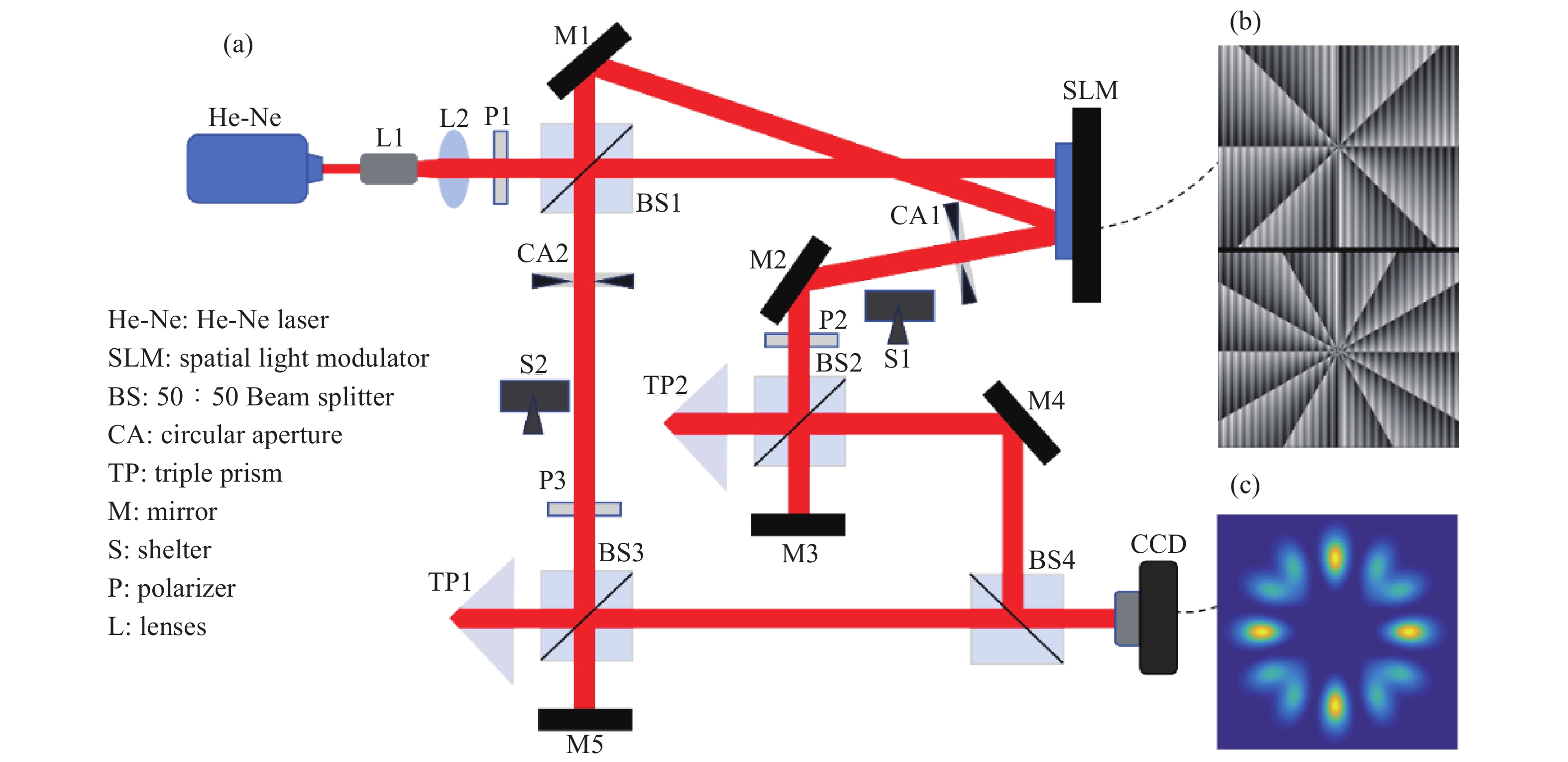
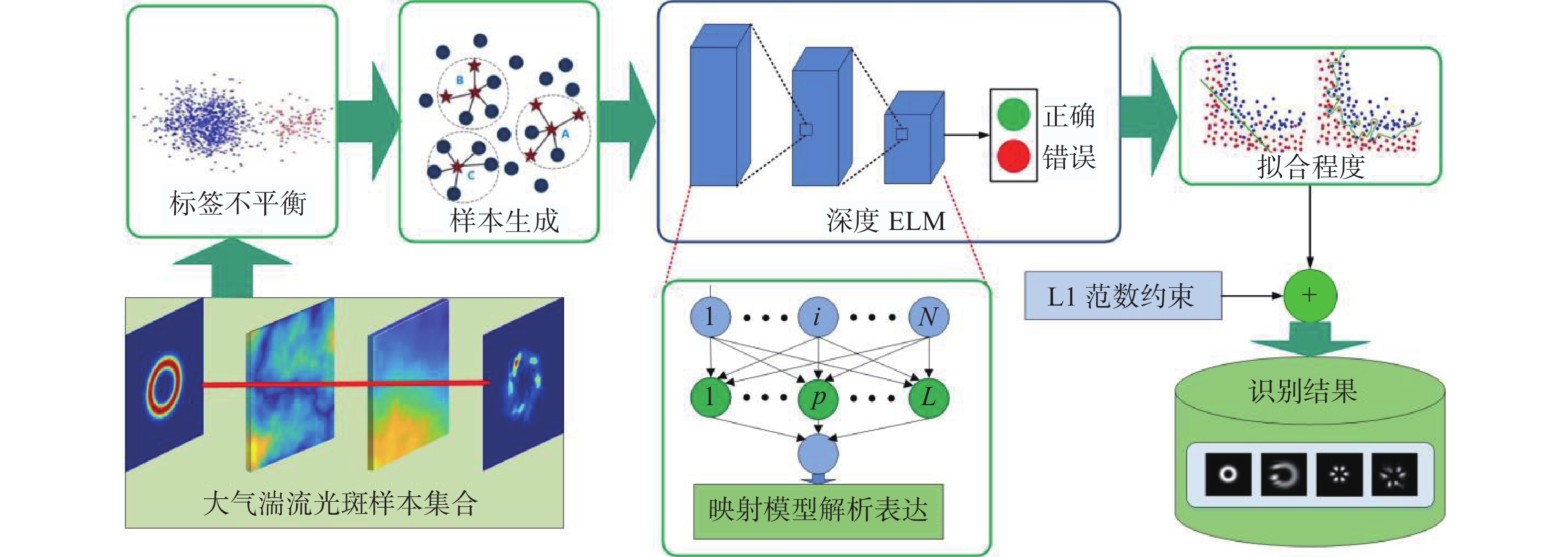
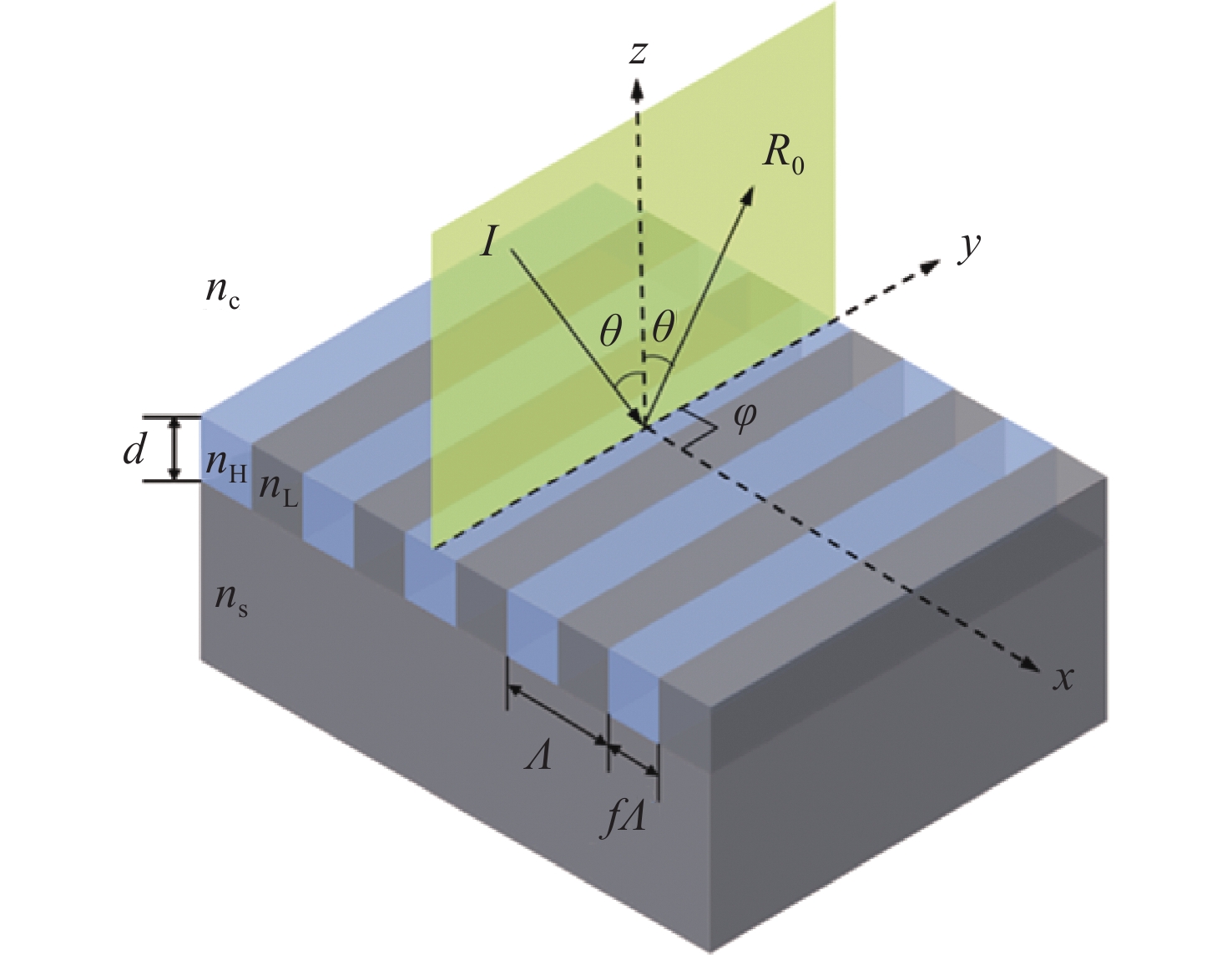




 Abstract
Abstract FullText HTML
FullText HTML PDF 3047KB
PDF 3047KB





